 |
by Karissa Bell on (#6XQJG)
Reddit will now allow its users to do something it never before has permitted: to selectively "curate" their public-facing profiles by hiding some of their posting and commenting activity from other users.Up to now, Reddit has included users' full commenting and posting activity in profiles. So while most users are anonymous, others could easily check out their post history and see what communities they're active in. The feature, which many users see as a key part of Reddit's openness, has helped Redditors ferret out trolling, lying and numerous other types of bad (or merely embarrassing) behavior on the platform.With the update, however, Reddit users will be able to "curate" their profile. The additional control will allow people to hide all their public posts and comments from their profile or hide public posts and comments in specific subreddits from their profiles. There is also a "NSFW" toggle, which would hide posts and comments in NSFW subreddits. The setting won't hide a comment or post in the subreddit where it originally appeared, but it won't be visible on a user's profile.The company notes that there will be some carveouts to these settings for moderators, who may rely on users' past activity to suss out rule-breakers or decide who is eligible to join their community. "If you post, comment, send modmail, request to be an approved poster, or request to join a private subreddit, that mod team will have access to your full profile content history for 28 days after the interaction - regardless of your settings," Reddit says in an FAQ.RedditDespite that concession, many Redditors aren't exactly happy about the changes, which could alter some of the core dynamics of the platform. "This seems like it's going to lead to bad actors being able to more easily hide their behavior from the average user," one of the most-upvoted comments on Reddit's post says. "Unless you're a mod, you won't be able to see that they're posting inflammatory misinformation across a dozen different subs, for instance."Others have noted the feature also means that creating an alt or throwaway account is somewhat less necessary, as it's easier to hide posts you don't want linked to your presence on the app. While that may be an added convenience for some, it also raises questions about the company's approach to making new accounts. During the company's most recent earnings call, CEO Steve Huffman suggested that Reddit was considering ways to "evolve" its "historically permissive account creation" process. Huffman didn't elaborate on what that may look like, but said changes would be necessary to fight AI-powered "abuse or manipulation" of the platform.This article originally appeared on Engadget at https://www.engadget.com/social-media/reddit-will-let-you-hide-posts-comments-and-nsfw-activity-from-your-public-profile-191956773.html?src=rss
|
 Engadget is a web magazine with obsessive daily coverage of everything new in gadgets and consumer electronics
Engadget is a web magazine with obsessive daily coverage of everything new in gadgets and consumer electronics
| Link | https://www.engadget.com/ |
| Feed | https://www.engadget.com/rss.xml |
| Copyright | copyright Yahoo 2026 |
| Updated | 2026-01-07 18:33 |
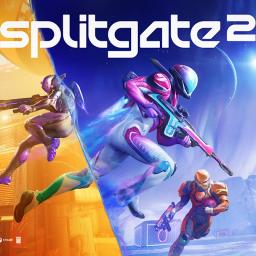 |
by Lawrence Bonk on (#6XQJH)
Splitgate 2 will officially launch on June 6, after what must've been a successful beta. It'll be available on a whole bunch of platforms, including PC via Epic, Windows and Steam. The game will also be playable on Xbox Series X/S, Xbox One, PlayStation 4 and PlayStation 5. It's free, with optional in-game purchases.As the name suggests, this is a sequel to the extremely popular 2021 arena shooter. Both the original and its sequel offer a fun gameplay hook. Players can create and jump through portals to surprise enemies or to traverse locations quickly. Otherwise, it's a first-person shooter, so imagine a nice combination of Quake with, well, Portal.There's a new trailer to commemorate the official launch, which zeroes in on the story. Developer 1047 Games promises there will be a "metric ton of maps, weapons and modes" on June 6. It has also announced that any progression made during the beta period will carry over to the full release. Version 1.0 will include a map creator and "so much more."To that end, the dev team says there's "one surprise left in store." This will be revealed at Summer Game Fest, so stay tuned. The first Splitgate was a legit phenomenon, with over 10 million beta downloads before it was officially released.This article originally appeared on Engadget at https://www.engadget.com/gaming/splitgate-2-will-exit-its-beta-and-get-an-official-release-on-june-6-185839801.html?src=rss
|
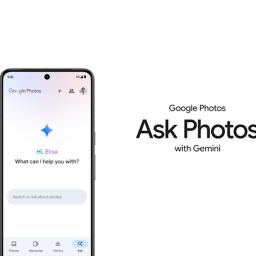 |
by Anna Washenko on (#6XQJJ)
If you're still waiting on access to Google's AI-driven Ask Photos feature, you'll need to hold tight a little longer. Jamie Aspinall, a product manager for Google Photos, chimed in to a conversation on X to address some complaints about the feature. "Ask Photos isn't where it needs to be, in terms of latency, quality and ux," Aspinall wrote. He said the rollout was being paused "at very small numbers" and that a new version of Ask Photos is slated to ship in about two weeks.
|
 |
by Lawrence Bonk on (#6XQJK)
There's a new tactical RPG coming down the pike, and it's a doozy. Never's End has a retro look that's sure to please fans of iconic titles like Final Fantasy Tactics and boasts a fantastic pedigree. Masayoshi Nishimura, from Octopath Traveler, is on character design duties and the rapper/multi-instrumentalist Doseone made the soundtrack. He previously composed the music for Enter the Gungeon.Indie developer Hypersect is making the game. It previously developed the creative puzzler Inversus, which ended up becoming a sleeper hit. The company hopes this will be something more than a clone of Tactics Ogre or the aforementioned Final Fantasy Tactics. Founder Ryan Juckett says that Never's End was also inspired by the freeform gameplay of stuff like Divinity: Original Sin 2 and The Legend of Zelda: Breath of the Wild.To that end, the game features an open world and plenty of creative ways for players to tackle turn-based battles. The battle grids can be transformed via elemental magic. Players can drain rivers in the middle of a battle, for the purposes of navigation, or melt the ground to turn it into lava. Enemies can be frozen or set aflame. The company promises that "every battleground is unique, challenging you to find new ways to use magic and shift the odds in your favor."Hypersect Customization seems to be the order of the day here. Players can "upgrade towns, temples and other locations to build businesses, establish trade routes, and recruit new companions." As the story progresses, these locations will attract a growing community of weaponsmiths, tavern keepers, tanneries, logging camps and more." Characters can also team up to unleash "tactical synergies." Check out the trailer. It looks pretty fun.Never's End comes out in late 2025. It'll be available for PlayStation consoles and PC via Steam. We don't have a price yet but it can already be wishlisted on Steam.This article originally appeared on Engadget at https://www.engadget.com/gaming/nevers-end-is-a-retro-tactical-rpg-with-a-fantastic-pedigree-180020441.html?src=rss
|
 |
by Karissa Bell on (#6XQJM)
We may never fully understand how TikTok's "For You" algorithm works or why it sends users down the sometimes very specific rabbit holes it does. But the company is making it a bit easier to control what topics are likely (or not) to appear in recommendations.The company is rolling out a setting to "manage topics" within the app to all users in an attempt to add more personalization to users' feeds. The setting, which the company began offering in the United States last year, is a set of sliders that allow people to specify how often they want particular types of videos to appear in their recommendations. The sliders cover about a dozen general topics, like nature; food and drink; fashion and beauty; and pets. For each interest, you can drag the slider to "see more" or "see less."TikTok notes that these in-app controls "won't eliminate any topics entirely," so the sliders won't, say, prevent any sports content from ever appearing in your feed. But the company says the setting "can influence how often they're recommended as your interests evolve over time."For those who want more granular control over their feeds - at least when it comes to blocking specific types of content - TikTok is also expanding its keyword filtering option, which allows people to choose specific keywords they don't want to see. Now, the app will use AI to make those filters smarter by adding extra keywords for similar content. For example, if you choose to filter "remodeling," the app may also opt to add "renovations" to your filtered words. The app may also automatically block alternate spellings of topics, like "cat" or "c@t." The company says it expects these "smart filters" to "get increasingly precise as more people use it over time" and that it will eventually allow users to add up to 200 keywords.Both features are available now in TikTok's settings in the app's "content" preferences section.This article originally appeared on Engadget at https://www.engadget.com/social-media/tiktok-is-making-it-easier-to-control-what-is-and-isnt-in-your-for-you-feed-175301931.html?src=rss
|
 |
by Andre Revilla on (#6XQJN)
Epic Games held its annual State of Unreal event today, offering a first look at some exciting new features coming to Unreal Engine 5 through a tech demo set in the world of The Witcher IV.The team at Epic Games, together with CD Projekt Red - developers of the Witcher series and Cyberpunk 2077 - premiered a roughly ten-minute gameplay and cinematic demo that follows Ciri through a snowy mountain pass in Kovir and into the bustling port of Valdrest. The visuals in the demo are not truly final scenes from The Witcher IV but serve as a proof of concept intended to highlight the cutting-edge graphics and tech behind the new Witcher installment.The demo ran on a PlayStation 5 at 60 frames per second with ray tracing enabled. This was made possible by a slew of new open-world building features coming to Unreal Engine 5.6, including a new Fast Geometry Streaming Plugin." Epic says the new plugin should help open-worlds load faster, though exactly how much faster is unclear. A marketplace scene set in Valdrest brimming with life also underscored the ability to create scenes full of high-fidelity characters and visual effects.Perhaps the most exciting part of the demo was the vast foliage that made up the forests of Kovir. This is thanks to Nanite Foliage, a new system that renders every leaf and branch as real 3D geometry instead of flat textures. This new feature, slated for release with Unreal Engine 5.7, allows for dense high-fidelity foliage without a huge hit to performance.Unreal Engine 5.6 is now available though many of the tools announced today are marked as experimental, including the Fast Geometry Streaming Plugin, new Control Rig Physics, improved motion capture tools and more. There is no specific release date for Unreal Engine 5.7 yet. As for The Witcher IV, we know not to expect it before 2027.This article originally appeared on Engadget at https://www.engadget.com/gaming/the-witcher-ivs-lush-world-is-on-display-in-unreal-engine-56-demo-174048532.html?src=rss
|
 |
by Will Shanklin on (#6XQFA)
For better or worse, Fortnite will let creators make NPCs that ditch the script and go freestyle. A new tool in the Unreal Editor for Fortnite (UEFN) will allow developers to create their own generative AI-powered NPCs. Their voice types, delivery styles and personality traits are all customizable.Epic demoed the tech on Tuesday during its "State of Unreal" keynote. The company said the NPC generated its responses in real-time during the presentation. It was created using "about 20 lines" of prompt text.The demoed character, Mr. Buttons, was created solely to persuade the player to press a large red button in a room. After the presenter asked about the signs in the environment warning against pressing the button, the AI bot persisted. "Signs, you say? Mere suggestions from those who lack imagination. After all, rules are made to be gently nudged aside. Wouldn't you agree?"Impressive as it was, the demo also showed the tech's current limitations. First, it's a turn-taking AI chat, not a live one with interruptions and overlapping. In addition, the presenter could only speak when holding a button to activate the microphone. After each question, Mr. Buttons would pause for a few moments to process. It tried to mask this with vocal fillers like "Hmmm," "Ahhhh," and "Ummm."Epic GamesThe tech builds on Darth Vader's appearance last month in Fortnite: Galactic Battle. Gemini 2.0 Flash generated the Sith Lord's dialogue, which was made to sound like James Earl Jones' voice using ElevenLabs AI tech. (His estate approved it.)How did it go? Well, AI Vader went viral for... probably not the reasons Epic hoped. On the bright side, it didn't quite devolve into AI Seinfeld levels of offensiveness. But a widely shared video showed Darth dropping an F-bomb. In response to a streamer using "freaking" and "fucking" in a voice prompt, Vader repeated the words. (Ironically, he then scolded the player for using harsh language.) Epic pushed a hotfix and promised it wouldn't happen again.Fortnite creators will be able to make the NPCs in the UEFN Editor later this year. You can check out the Mr. Buttons demo below.This article originally appeared on Engadget at https://www.engadget.com/gaming/fortnite-is-about-to-unleash-ai-powered-npcs-172728548.html?src=rss
|
 |
by Lawrence Bonk on (#6XQC4)
There aren't that many pizza ovens made for indoor use. That's why the Ooni Volt 12 is special. This indoor oven is now on sale for 30 percent off via Amazon, bringing the price down to $629. This deal is also available directly from the manufacturer. The Volt 12 made our list of the best pizza ovens, and for good reason. It's simply the best indoor pizza oven on the market, not that there's all that much competition. It can reach temperatures of up to 850 degrees Fahrenheit, which cooks up a Neapolitan style pie in around 90 seconds. This is approaching the ultra-high temperatures that outdoor ovens achieve. To that end, this unit can be used outside when necessary. We actually said it "works just as well" as the outdoor models in our official review. Front-facing controls offer the ability to adjust both heating elements, with cooking presets and a boost function to quickly get the oven back to temp between pies. It comes with a square-shaped pizza stone, which is handy because it allows folks to slide in pans for Detroit style pizza or traditional baked goods. As a downside, this thing is huge. It'll most likely have to be stored away between use sessions. The exterior gets pretty hot, so keep the kiddos away until it's time to nosh. Follow @EngadgetDeals on X for the latest tech deals and buying advice.This article originally appeared on Engadget at https://www.engadget.com/deals/the-ooni-volt-12-pizza-oven-is-30-percent-off-right-now-151453097.html?src=rss
|
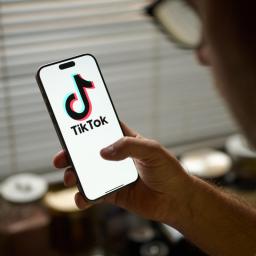 |
by Sarah Fielding on (#6XQC5)
The internet is both excellent and horrible at spreading information and community. In one sense, it can provide access to so many people and perspectives that aren't available in a person's day-to-day life. At the same time, it can be ripe with misinformation and people who cause more harm than good.Now, a new study from The Guardian is revealing just how intertwined these two things can be. An investigation found that 52 out of the top 100 videos tagged #mentalhealthtips contained at least some misinformation, according to a team of mental health professionals. These clips discussed conditions and experiences such as anxiety, depression, bipolar disorder, trauma, neurodivergence and more."TikTok is spreading misinformation by suggesting that there are secret universal tips and truths that may actually make a viewer feel even worse, like a failure, when these tips don't simply cure," said Amber Johnston, a British Psychological Society-accredited psychologist, who reviewed videos about trauma for The Guardian.The experts identified four major themes within the misleading and inaccurate information. The first, pathologizing normal emotions, came in videos that described everyday feelings, such as tiredness or feeling anxiety around changes, as clear indicators of specific mental health disorders. They seemed to imply that experiencing any symptoms of a mental health disorder meant the viewer must be living with it.Then there was misuse of therapeutic language, whether through inaccurately describing a mental health disorder or using words like abuse, to explain certain actions, without context or nuance. The third category was reportedly the most common: unevidenced treatments and false claims. These clips include claims that a certain method can heal trauma in just one hour, that ingesting certain things causes depression and that manufactured supplements will ease anxiety.The last theme identified was anecdotal evidence. Videos in this area included recommendations to get inpatient treatment solely based on the creators' own experiences. Another showed someone in a hospital gown who implied that they were in a psychiatric unit for being too honest with their therapist.Misinformation is a tremendous issue across social media platforms, with many companies doing little to nothing about it. Take Meta, for example, which removed its fact-checking program in the US this past April. Instead, it has opted for community notes that allow for crowdsourced responses to posts.TikTok has made multiple claims over the years that it's removing "problematic" content and inaccurate videos. In a statement shared with The Guardian, a TikTok spokesperson commended the app for being a place people can share and get support for their mental health experiences. "There are clear limitations to the methodology of this study, which opposes this free expression and suggests that people should not be allowed to share their own stories."The spokesperson added that TikTok works with the World Health Organization and the NHS in the UK to provide accurate information, further claiming that the app removes 98 percent of "harmful misinformation before it's reported to us."This article originally appeared on Engadget at https://www.engadget.com/social-media/tiktok-ripe-with-mental-health-misinformation-new-study-reports-150359735.html?src=rss
|
 |
by Daniel Cooper on (#6XQC6)
Spoilers for The Reality War."The BBC and Disney chose not to share screeners ahead of The Reality War" to preserve its numerous twists. There isn't time to review it in the usual style, but I felt I'd be remiss not to cap off this run of reviews by talking about the finale. And it's not as if I've nothing to say about what the hell happened on Saturday.It's the end... but the moment has been prepared for.'"I refuse to believe that The Reality War" was planned and written as the execution of this run of Doctor Who. I'm well aware the BBC, Bad Wolf and Ncuti Gatwa claimed the intention from the start was for him to bow out after two short seasons. I'm not buying it.On one hand, the rumors of disharmony behind the scenes, last minute reshoots and Disney's reported displeasure are hard to ignore. But there's far better evidence, which is to just watch the damn episode and try to think about what happened for more than a heartbeat.Everything after the Doctor's triumphant return to UNIT HQ feels like it was hastily assembled and tacked on. In fact, there are times in which it feels like all of the main actors are reading from different scripts, and not interacting with one another.Spot the joinLara Cornell/BBC Studios/Bad WolfI've seen some people grousing about the simple way the Omega storyline was resolved, but I think it was always planned that way. Russell T. Davies' has always ended the big dramatic plots of his finales early to make more room to show the aftermath for the characters.Take last year's Empire of Death," which dumps off Sutekh two thirds of the way in to spend the rest of the episode showing Ruby meeting her birth mother. For Davies, the big CGI space monsters are always the means through which he can spend moments with his characters.And yet the character moments here are weird if not totally incoherent - the one highlight being the moment that Poppy disappears. The shot of the Doctor and Belinda absentmindedly handing her coat back and forth as it turns into an ever-smaller piece of cloth is sublime.But when Ruby's protestations are finally taken seriously, the Doctor's decision to just hand Belinda a child comes totally out of left field. Not only does it not agree with anything that we've come to know about her over the last eight weeks, it's also totally pretty outrageous.Which is why it's far more plausible that Davies, faced with no commission for a third season and with a lead actor looking to quit, just wrote a few pages of nonsense to justify the change.One day, I shall come back."Naturally, the rumors suggest the original ending would have seen Susan appear as a lead-in to the next season. Again, this isn't so much a hint as something the last two years have been very clearly laying the foundations for. The Doctor openly discussed that he has a child living in London (in The Devil's Chord") and the Susan Twist saga was designed to play up to that. Going to the trouble of hiring the 84-year-old Carole Ann Ford and putting her in brief cameos in the last two episodes - plus dropping references to that in Lux" - was clearly part of the plan. Now, after the extensive, patient buildup of that storyline, it appears that we'll not get the chance to see what Davies had intended.Going back to the point about the BBC and Gatwa's claim that this was always meant to be a two-season deal, it's likely the show's original ending will be swept under the rug. And given Ford's age, it's likely that we'll never get the chance to give the actress the sendoff she really deserved in 1964.Davies has never been that sort of writer."A large amount of fan speculation this year was focused on the various structural and thematic coincidences. Each episode of this run could more or less map onto the previous one and went over similar ground. But, as far back as Lux," I said that Russell T. Davies wasn't that sort of writer, building a mystery box that would resolve perfectly by its conclusion. His writing is a little more like a kid pulling toys out of a toybox and smashing them together at speed.The Reality War" is a great example of this approach, since while there were plenty of elements that came back, none of them were as vital to the plot's conclusion as they could have been. Anita was a convenient way of getting the Doctor out of the cliffhanger, but did nothing else for the rest of the episode. Hell, it's hard to take the suggestion seriously that she'd fallen in love with the Doctor but not realized he was, at least in this incarnation, more interested in men. Joy, too, from Joy to the World" gets a mention but with little emotional attachment given the events of that episode. And on the subject of its treatment of women...I was this really brilliant woman"James Pardon/BBC Studios/Bad WolfDoctor Who has spent much of its recent years trying to address its own blind spots around representation. This era has continued this tradition, broadening out the series' supporting cast, especially the team known by fans as the UNIT Family." In The Reality War," every one of the Doctor's allies, barring Colonel Ibrahim, is either a woman or non-binary. And yet, the sheer number of cast members means each one is almost aggressively underserved.The Reality War," after all, is focused on unpacking a false reality called into existence by an ultra-conservative YouTuber who ignores and erases disabled and queer people. But the show's treatment of these characters both during the action-packed finale, and afterward, is rough. When the team starts working together, the legion of people around the Doctor get little to nothing of note to actually do.Anita is quite literally reduced to the role of a human doorstop (she holds the door to the Time Hotel open to counteract Conrad's wish). Kate orders Shirley to fire the lasers. Susan (Triad) builds the zero room. Mel does quite literally nothing once she's sneered at the Rani. And then there's Rose.Rose's brief inclusion would have been extraordinarily poignant if she'd helped defeat Conrad once she's been pulled out of oblivion. Instead, she's just there so the Doctor can point out she was erased because Conrad hates (and/or ignores) nonbinary transfem people. And after that moment, Yasmin Finney essentially disappears from the episode once again, making her less a character and more a prop.It gets worse with the treatment of Ruby and Belinda - the former marginalized and almost aggressively ignored by the characters to the point that I assumed their rejection of her claims was a sign the reality hadn't actually been fixed. But the latter goes from not having a child, to having a fictional child in Conrad's world, to forgetting she exists when Conrad's wish is undone. When the timeline resets and she no longer has any memory of a child, the Doctor then opts to sacrifice his life in order to bring that child back into existence. I mean, what? Given Davies' politics, and the (ostensibly) pro-abortion subtext of Space Babies," the Doctor suddenly re-writes the universe to force his companion - without her consent - into motherhood.It's funny, but is it going to get them off their tractors?"I'm a Brit, reviewing a uniquely British show for a predominantly American audience, and so try to view the series through that lens. Doctor Who has been a fixture in the US since the 70s and was a mainstay on PBS through the 80s and so it's not an unknown property. The revival series may not have been an instant hit, but quickly built a respectable audience on BBC America. But while in the UK the series is a mainstream hit, its US demographic can be roughly broken down into genre nerds and anglophiles.Consequently, there was a degree of nervousness about how the revitalized series would be received by the far broader audience on Disney+. Davies' had spoken about the need for the series to recruit new fans, downplaying the series' six-decades-long backstory. But despite that aim, it never felt that the series was making many concessions to its potential audience. Don't forget, the Ncuti Gatwa series is playing out in the shadow of specific events from its 2021 series and the second and third of its three 2023 specials. And yet, rather than starting from a clean(-ish) slate, the series threw itself headlong into a multi-year story about its broken reality.In the 70s or 80s depending on the dating protocol..."The Two Ranis / Two Ronnies gag was great, but did anyone over the age of 30 get it?BBC Studios/Bad WolfAnd on that subject, I don't think we really needed to see the Rani or Omega again, especially as Conrad was a compelling enough villain on his own. I'm the sort of Doctor Who fan who bleeds TARDIS Blue if you were to cut me (but don't do that). But I'm also sufficiently interested in new experiences that I'd rather the show avoid relitigating and revisiting the same coterie of classic series villains.Omega wasn't a mainstay anyway, and his second appearance (in Arc of Infinity") was tedious enough that his absence wasn't missed. Similarly, while the Rani offers a different spin on the homegrown foe trope, it's hard not to just write her as a female Master. And, let's be honest, as much as I'm trying not to invoke Steven Moffat here, Missy was so well done we didn't need to go back to that well ever again.Similarly, I can't help but wonder how many folks who persisted with the series until this point bailed out. The late Craig Hinton coined the term Fanwank" as a catch-all term for the sort of self-indulgent storytelling that exists to satisfy the author's own obsessions. You know, fan fiction that makes Captain Kirk the father of Jean-Luc Picard or that Han Solo and Luke Skywalker were secretly friends in childhood. Having the Rani bi-generate to rebuild a new Gallifrey with Omega as its progenitor is the sort of self-indulgence most people grow out of.Doctor Who isn't Star TrekJames Pardon/BBC Studios/Bad WolfSeveral times this season, we've seen Doctor Who smash its face into the limits of its own storytelling. Its premise is far more elastic than many others, but there are themes it simply cannot meaningfully engage with. Lux," Lucky Day" and The Interstellar Song Contest" all gestured toward big real-world topics (structural racism, abuse and radicalization, genocide and reputation laundering) that are simply beyond the capacity of a science fantasy show about a quasi-immortal clown solving problems. And here we're learning another big fact about Doctor Who: It's not Star Trek.The battle between UNIT and the big dinosaur skeletons was shot and edited as if we were watching the crew of the Enterprise. Now, I'm not watching Doctor Who for the gritty realism but there's a moment when you can go through silly fun and into ridiculousness. And when the UNIT tower, consciously modeled on the Avengers' Stark Tower, starts spinning around to shoot its lasers, you have to wonder how many people had to sign off on that image thinking it was okay.Eating its own tailDoctor Who's critical and popular success has always waxed and waned, and that's nothing to be worried about. There was, however, a sense during Chis Chibnall's era that he wanted to recapture the glories of Davies' era. After all, David Tennant's initial tenure saw the show become the biggest thing on British TV with ratings often passing the 10 million mark. I suppose it comes as no surprise, then, that Davies would repay the compliment by giving Jodie Whittaker's 13th Doctor a cameo. It's a shame that it's as equally incoherent as the rest of the episode's finale, but it does a far better job of addressing the #Thasmin plot - the implied romance between the Doctor and her companion Yaz - than Chibnall's own era does.Naturally, Davies was better able to capitalize upon this nostalgia, recruiting the stars of his own era - David Tennant and Catherine Tate - to come back for the 60th anniversary specials. That was a nice piece throwback to help get the series back on track ahead of its rejuvenation with Ncuti Gatwa at the helm. Obviously, while hiring one of the stars of the series' most recent heyday for a short tenure for the anniversary was a nice treat, the series now needs to strike out on its own. Or, at least, that was the thinking until Ncuti Gatwa regenerated into Billie Piper.Billie PiperBBCI was 20 when Doctor Who came back and was as sneery as the rest of the country when Billie Piper was announced as the show's companion. Piper was a teenage singer - the youngest UK Number One act - and while not a one-hit wonder, her music career stalled. Aged 18, she married the 35-year-old radio DJ and TV presenter Chris Evans and became tabloid fodder. Naturally, the whole country had to eat crow when it turned out she wasn't just a fantastic actor but a true powerhouse and star. Her return for The Day of the Doctor," as the psychic interface of Gallifreyan superweapon The Moment, was a joyous one. And while the leaks had revealed Piper would be replacing Gatwa, it was still nice to see her appear on screen.Given Piper was not credited as And introducing Billie Piper as the Doctor" it's clear that her inclusion is another hedge. If nothing else, she can take the role for the revival series' 20th anniversary and hopefully pull in more eyes to whoever replaces her. But as desperate as the move seems, I'd be happy to see her remain in the role for an extended period of time - she's brilliant, clearly has plenty of affection for the show, and has enough star power to carry the series on her back. So, if Piper is back, let her be back for a long time and let her bask in all of the adoration she so rightly deserves.There are worlds out there..."At the risk of armchair psychologizing, I suspect all Doctor Who fans of a certain age carry the wound of 1989 very deeply. The show had entered a creative renaissance thanks to the work of Andrew Cartmel that had invigorated long-serving producer John Nathan-Turner. Just as it had found its feet and started to produce era-defining work in a model that could have sustained it through the 1990s, the plug was pulled. There have been many (many!) post mortems as to the causes but James Cooray-Smith's recent essay on the subject is probably the most concise. In short, a combination of executive snobbery, personal enmity (John Nathan-Turner was not well-liked by his bosses) and budgetary issues caused the show's demise.1989 to 2005 was beset by false dawns, the BBC's self-sabotage and fans essentially taking ownership of the property. Virgin Publishing had the license to publish tie-in novels that evolved into the New Adventures line. In the gap, the need for new Doctor Who was filled by writers: some professional, some fans who would go on to become professionals with a monthly book series. And then, in 1999, a production company called Big Finish secured the rights to produce new audio adventures featuring classic Doctors. But aside from the abortive (and mostly awful) 1996 TV movie that served as a pilot for a US version of the show, Doctor Who was dead.It wouldn't be until the second series of the reboot, when David Tennant took the role and it became the biggest thing on TV, that the worry the show would go away again started to fade even as ratings and public enthusiasm declined with Steven Moffat at the helm. But those fears have returned in the last decade, especially given the lukewarm critical and audience reception to Jodie Whittaker's tenure. And with Disney pulling back and the BBC's own budget crisis, the risk to Doctor Who's future - with no new series confirmed to be in the works - is grave.On one hand, the BBC has said we may see the situation change in a year, but then it said that in 1989 as well. I'm going to hold off writing an obituary, however, because if Doctor Who is to go back on the shelf, it's going to be taken very good care of. After all, many of the fans who kept the flame alive during the first wilderness years would go on to make the series proper. And I'm sure the next generation of fans are ready to cut their teeth on their own projects that'll one day grow into whatever Doctor Who becomes in a decade or more.This article originally appeared on Engadget at https://www.engadget.com/entertainment/tv-movies/12-thoughts-about-that-doctor-who-finale-150032038.html?src=rss
|
 |
by Matt Tate on (#6XQC7)
Meta has signed a 20-year agreement with Constellation Energy that will allow it to purchase nuclear power supplied by the Clinton Clean Energy Center in southern Illinois. To help fuel its AI ambitions, Meta said in a statement that it is prioritizing 100 percent clean, renewable energy for its data centers and recognizes the "immense value of nuclear power in providing reliable, firm electricity."Rather than building a new nuclear plant, Meta says its deal with Constellation for its existing Clinton center will ensure the plant can remain in operation long-term, preserving over 1,000 local jobs. The deal, the first of its kind for Meta, commences in 2027, and will see Facebook's parent company buy in full the approximately 1.1 gigawatts of emissions-free nuclear energy currently being generated at the site. Meta also committed to expanding the grid by an additional 30 megawatts. The exact financial details of the landmark agreement are not detailed in the statement.Meta has been behind the curve on nuclear, with big tech rivals Google and Microsoft already buying up significant capacity. In December last year, Meta confirmed its ambition to add between one and gour gigawatts of nuclear energy capacity to its US data centers by the early 2030s, so the Constellation agreement is something of a headstart for Mark Zuckerberg's company.Meta did actually plan to build a nuclear-powered data center of its own, but was reportedly forced to scrap it when a rare bee species was discovered on the land it had earmarked for the project. According to the Financial Times, Zuckerberg told staff at the time that Meta would have had the first nuclear energy AI if the bee-related pivot hadn't been necessary.This article originally appeared on Engadget at https://www.engadget.com/big-tech/meta-signs-multi-decade-nuclear-energy-deal-to-power-its-ai-data-centers-144916645.html?src=rss
|
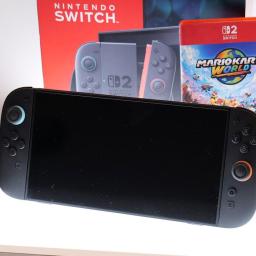 |
by Sam Rutherford on (#6XQ8Z)
A next-gen Nintendo only comes around once a decade, which makes the Switch 2's launch feel like a birthday, graduation and Christmas (or your holiday of choice) all rolled into one. However, like many gift-giving celebrations, obtaining the Switch 2 comes with several implications for your wallet and how it will fit into your life. So after getting the chance to play the Switch 2 for nearly 15 hours across two different sessions, I wanted to put together one last preview about Nintendo's next console and if you should (or should not) try to snag one when it officially goes on sale on June 5. Note: Another big reason for this second preview/hands-on is because unlike in years past, members of the media won't be getting review units prior to launch. So this story features as much info as we have right now before open sales begin later this week. Design Sam Rutherford for Engadget Nintendo hasn't deviated too much from the original Switch's template for its successor. You still get what is essentially a small tablet with two detachable Joy-Con, a built-in kickstand and a dock for hooking it up to your TV. That said, it feels like Nintendo has upgraded almost every component in some way. The Switch 2's screen is significantly larger at 7.9 inches across (up from 6.2 inches), while also having a higher resolution (1,920 x 1,080 vs 1,280 x 720). And while it's not an OLED panel, LCD tech has really come a long way to the point where it's honestly hard to tell (especially if you're in a well-lit room). You also get support for HDR and variable refresh rates at up to 120Hz on its native display. You can see HDR support for the Switch 2's built-in display on things like the reflections coming from the truck's bumper. Sam Rutherford for Engadget The Joy-Con, while retaining a familiar shape, have also basically been redesigned from the ground up. Not only are they a bit larger, they also feature a new magnetic attachment system with a larger button that makes snapping them on and off a breeze. Haptic feedback has also been enhanced with HD Rumble 2, which provides a stronger and wider range of vibrations. But that's not all because there's even a new C button for Nintendo's Game Chat feature (more on that later), along with what may be one of the biggest hardware surprises on the entire console. Thanks to small cameras built into the edge of each Joy-Con, when tilted on their side, they can turn into mice. This functionality is something I was skeptical about at first, but it quickly grew on me to the point where using the right Joy-Con as a mouse and the left as a traditional controller became my favorite way to play shooters like Metroid Prime 4: Beyond. You can activate mouse mode for the Switch 2's Joy-Con simply by turning them on their side in supported games. Sam Rutherford for Engadget As a mouse, the Joy-Con work surprisingly well even when you don't have a flat surface in front of you. I tried using them on the arm of a couch and my pants rather successfully. That said, if you're a true mouse and keyboard aficionado, there's still a gap in accuracy and responsiveness between Nintendo's Joy-Con and a traditional desktop mouse, though part of this is because when rotated sideways, the narrow controllers sometimes tilt over a bit too easily. Sadly, the big question I can't answer yet is whether these new Joy-Con will suffer from drift similar to what many people experienced with the original Switch. Nintendo says it's using a new setup inside that should be significantly more robust, but only time and lots of mashing on those analog sticks will tell us for sure. Performance Nintendo While the Switch 2 is significantly more powerful than its predecessors, to what exact degree we may not know for some time. Its core specs include a custom chip made by NVIDIA that features support for real-time ray tracing, G-Sync, DLSS and what the company says is 10 times the graphics performance of the Switch 1. It also has 12GB of RAM and 256GB of built-in UFS storage (of which 232GB is available out of the box). There's also a microSD Express card slot for expandable storage, a 3.5mm audio jack, Wi-Fi 6 and not one but two USB-C ports (though only the bottom jack supports video out). But what might be the biggest indicator of the Switch 2's improved horsepower is the sheer number of third-party ports that will be available at launch (or at least its first month on sale). This includes titles like Cyberpunk 2077, Yakuza 0 Director's Cut, Hitman World of Assassination and others, which are all games that developers didn't even really try to bring to the Switch 1 due to its more limited performance. Battery life Sam Rutherford for Engadget Featuring a 5,220mAh battery, Nintendo's official longevity estimate for the Switch 2 ranges from 2 to 6.5 hours, depending on the exact game you're playing. For a more real-world evaluation, during my second preview, I played Mario Kart World in handheld mode with the Switch 2's screen set to max brightness (with ambient lighting disabled) starting from 100 percent battery. After 30 minutes, the console had 81 percent left, so if you do some rough back-of-the-napkin math, that translates to a total runtime of around two and a half hours. That number might seem a bit low, but in many respects, this represents a worst-case scenario, as the device was connected to Wi-Fi and its screen was on full power. Furthermore, while I can't say for sure the Switch 2 is like this, some gadgets discharge power slightly faster when their battery is at or close to max capacity. In short, I wouldn't be surprised that by tweaking its settings a bit, it would be possible to boost that time up to three hours or more. And of course, if you're playing a less demanding game (particularly an older Switch 1 title), I think Nintendo's upper limit of six and a half hours is very plausible. Nintendo's launch titles and third-party games It's important to note that the Switch 2 bundle with Mario Kart World comes with a digital download instead of a physical game cartridge. Sam Rutherford for Engadget Over time, the original Switch sort of became the system you whipped out when you wanted to play first-party Nintendo games or smaller indie titles as the console simply didn't have the horsepower to keep up with the latest Xbox or PlayStation. And while there are a number of third-party games like Elden Ring, Borderlands 4 and more that are planned to arrive on the Switch 2, the number of brand new games from Nintendo for the Switch 2's launch is rather thin: it's just Mario Kart World and the Nintendo Switch 2 Welcome Tour. Granted, by the end of 2025, that list will look a lot better with Donkey Kong Bananza, Metroid Prime 4: Beyond and Kirby Air Riders slated to arrive later this year. The Switch 2 is also backwards compatible with games designed for the Switch 1, which gives it a rather large library out of the gate. But for anyone without a huge backlog, the lack of fresh launch titles is one of the biggest reasons that people shouldn't feel like they are missing out if they can't get their hands on a Switch 2 at launch. The Nintendo Switch 2 Welcome tour generally consists of tutorials and quizzes about the console along with mini games like this one which requires you to use mouse mode to help the UFO dodge spiky balls. Nintendo Furthermore, while I've warmed up to Nintendo Switch 2 Welcome Tour as it's a great way to learn about the console's capabilities. I still feel like it should have been a free pack-in that comes with the system instead of an additional $10 purchase. It's not nearly as fun or endearing as Astro's Playroom was for the PS5 and I would say it's only a must-buy for the most die-hard Nintendo completionists. On the flipside, Mario Kart World is everything you want from a new installment in one of Nintendo's most iconic franchises and then some. According to Nintendo itself, this game has been in development since 2017 and it really shows. Between the interconnected tracks and free roam mode, Mario Kart World's map feels absolutely massive. The full roster and list of vehicles is also immense and there's a fun new mechanic that allows you to generate boosts without needing to drift or jump up onto ledges, railings and walls to do tricks. I've even heard that you can use this skill to dodge blue shells, though I haven't been able to nail the timing myself just yet. Cheep cheep might be my favorite new character in Mario Kart World. Seeing a fish drive a car and throw bananas will never not be funny. Sam Rutherford for Engadget At its core, the game has the same polished driving and item slinging that people adore. Just one word of warning: With the game now supporting up to 24 players in a single race, being in the middle of the pack is even more chaotic than before. You're basically asking to get constantly bombarded. Regardless, buying a Switch 2 without Mario Kart World feels like a mistake. That said, anyone planning on purchasing the bundle with both the console and game included should know that Mario Kart World comes as a digital download instead of a physical cartridge, which is a small bummer because otherwise the package essentially knocks $30 off the normal $80 price tag for the game. Important add-ons and accessories In addition to your usual assortment of cases, screen protectors and portable battery packs, there are two types of Nintendo Switch accessories you're going to want to give some extra special consideration. The first is a microSD Express card, because while the Switch 2 comes with much more onboard storage than its predecessor (256GB, up from 32GB), with games like Mario Kart World featuring a file size of 23.4GB, depending on how big your digital library is, you might run out of space faster than you think. Nintendo Furthermore, you won't be able to use the same basic microSD cards used by the OG Switch, as the Switch 2 is only compatible with the newer microSD Express format. The good news is that this memory is significantly faster than before (potentially up to four times speedier), which should provide quicker file transfers and loading speeds in games. The bad news is that microSD Express cards cost more than your garden-variety expandable storage with 256GB options costing around $60 or closer to $200 for larger 1TB models. For a more in-depth rundown, please check out our full guide on the best microSD Express cards for the Switch 2. The other accessory you'll want to think about is a camera, as you need one if you want to use the Switch 2's new video chatting capabilities. On top of that, there are some features in titles like Mario Kart World and the updated version of Super Mario Party Jamboree that use the camera to superimpose you or your friends' faces inside the game to add some extra personalization to the fun. Thankfully, Nintendo's official camera is relatively affordable at $50, though there are some intriguing third-party options like this adorable Piranha Plant-themed one from Hori. The importance of Nintendo Switch Online + Expansion Pack There are two different tiers for Nintendo Switch Online. The basic $20 per year plan includes support for online play and Game Chat along with access to select classic titles from the NES, SNES and Game Boy. You also need it if you want cloud saves or the ability to transfer saved data between your original Switch and a Switch 2. While not strictly necessary, the Switch 2's Pro Controller is pretty much a must-buy for people who primarily play the console while docked to their TV. Sam Rutherford for Engadget That said, Nintendo makes a strong case for upgrading the more expensive NSO + Expansion Pack plan ($50 a year) which adds in games from the N64, Sega Genesis and Gamecube. But perhaps more importantly, this premium tier also gives you access to upgrade packs for original Switch games including The Legend of Zelda: Breath of the Wild, The Legend of Zelda: Tears of the Kingdom, Pokemon Scarlet and Violet and more. The updates not only make these games run smooth, they also include some extra features like the Zelda Notes app and even support for HDR for select titles. So if you're worried about not having enough games to play on the Switch 2 at launch, NSO + Expansion Pack feels like a great way to instantly flesh that out. Game Chat One of the biggest additions to the Switch 2 is Nintendo's Game Chat feature (which includes a dedicated chat button). I admit, it's easy to write it off as Nintendo simply copying Discord and including similar functionality natively, but based on my experience with Game Chat so far, I've been impressed with how simple and convenient it is to use. Nintendo You can host your own chat room or join another (with people sourced from your friends list) and from there you can select between several sharing layouts and other options. There's a voice-only mode along with small and expanded views that show what your friends are playing in dedicated windows along the bottom of the screen. Up to four video streams can be open at the same time and a total of 12 people can be in the same group simultaneously. There's even a setting to turn on speech-to-text (or text-to-speech if you want to read what others are saying) with support for multiple languages as well. Parents also don't need to be worried about who might pop into their children's rooms because they can manually approve who is allowed to participate in chat rooms with their kids via Nintendo's Parental Control app. My only gripe is that some video features are a bit low-res, which results in some aliasing (aka jaggies) when you activate the face cutout mode or turn on the setting that removes your background. TV compatibility One potential complication you don't really need to think about with the Switch 2 is if your TV can take full advantage of the console's capabilities. As long as it can handle 4K (3,840 x 2,160) at 60 fps or 1440p at 120 fps, you're pretty much set. That's because while the Switch 2 technically supports VRR at up to 120 fps, that spec only applies to the console's built-in display. Sam Rutherford for Engadget That may be a bit of a bummer for some, though depending on the title, the Switch 2 may be able to send out 120 fps content at 1440p, which isn't quite as good as what you get from some games running on the PS5 or Xbox Series X. But considering the OG Switch couldn't do 4K at all, I'll take what I can get. Budget considerations Priced at $450 (or $500 for the bundle with Mario Kart World), the Switch 2 carries with it a bit of sticker shock compared to the $300 launch price of the original Switch. Now I'm not here to tell you if that's too much or simply too expensive in this economy. However, I think it's important to point out that when adjusted for inflation, $300 in 2017 is worth about $400 in today's money and that's before you factor in things like tariffs and taxes. Furthermore, you'll want to consider your total spend, which may include the price of NSO, any games or accessories, or if you're lucky enough to buy multiple units, the cost to get more than one Switch 2. Future outlook When I got my original launch Switch back in 2017, I had no idea it would hold me down over the last eight years as well as it has. Personally, I'm planning to put my own money down on what looks to be a very thorough upgrade over its predecessor. And it's a similar situation for anyone lucky enough to snag a pre-order, as your mind is probably already made up. Sam Rutherford for Engadget The Switch 2 retains almost everything people love about its predecessor while adding extra polish and performance across the board. Yes, simply by the numbers, it's a lot more expensive than the original, but I'd argue that its upgraded specs and the ability to serve as both a home console and a portable game player puts it on equal footing when compared to similarly priced rivals from Microsoft and Sony. I do wish Nintendo's first-party software lineup was a bit deeper at launch, but I think the Switch 2's backwards compatibility and much stronger third-party support are doing a lot to fill in the gaps until DK Bananza and Metroid Prime 4 arrive later this year. That said, not being able to obtain a model at launch shouldn't be a major downer. Mario Kart World is the only major new first-party Nintendo game out of the gate and while it's so good that I'm certain everyone will be playing it for the next decade, those who can't won't be left in the dust. I feel like the real goal for serious gamers is to simply get (or save up for) one by the end of the year when more flagship titles become available. After all, as good as the Switch 2 has been during my previews, it becomes so much better when you can play it with friends and it's going to take time for supply to catch up to demand. This article originally appeared on Engadget at https://www.engadget.com/gaming/nintendo/nintendo-switch-2-the-final-preview-faq-140055895.html?src=rss
|
 |
by Lawrence Bonk on (#6XPPJ)
If you've been holding out for a good discount on a new TV, Best Buy's latest TV sale might have what you're looking for. A number of sets from brands like Samsung, LG, Sony and others are on sale right now; key among the discounted TVs are Roku's Pro Series sets, which you can grab for up to $900 off. You'll find that discount on the 75-inch Pro Series model, which is on sale for $800. If 75-inches is too big for your space, the 65-inch Roku Pro Series is on sale for $600. This is basically 50 percent off, as the regular price is $1,200. We haven't gotten our hands on a Pro Series TV to test out, but the specs are top-notch and reviews are generally positive. They include Mini-LED panels, with full array local dimming backlights, and 4K resolution. There's a refresh rate of 120Hz, which is decent for gamers, and some notable features like HDR 10 and Dolby Vision. These TVs ship with the company's proprietary OS, so you'll have instant access to all of the major streaming platforms. There are four HDMI ports and each unit comes with a remote that offers voice control via Alexa, Siri or Google Assistant. Of course, Best Buy's sale doesn't begin and end with Roku. There are all kinds of TVs available at a discount. For instance, the Hisense 85-inch Class S7 has dropped down to $2,500, and it's typically $4,000. This is the company's answer to Samsung's The Frame. Follow @EngadgetDeals on X for the latest tech deals and buying advice.This article originally appeared on Engadget at https://www.engadget.com/deals/best-buys-tv-sale-includes-up-to-900-off-roku-pro-series-sets-185455486.html?src=rss
|
 |
by Igor Bonifacic on (#6XQ90)
Nothing plans to launch the Phone 3, its first proper flagship, on July 1, the company announced today. We already knew the phone was coming this summer, thanks to a teaser Nothing shared during last month's The Android Show I/O Edition. During the segment, Nothing CEO Carl Pei said the new device will cost around 800 ($1080), which would easily make it the most expensive handset the company has produced to date. Pei also said Nothing plans to go "all-in" on Phone 3 with "premium materials, major performance upgrades and software that really levels things up."
|
 |
by Mariella Moon on (#6XQ91)
You can no longer use Google Wallet to pay with your PayPal account in the US. As Android Authority has reported, Google has updated the Wallet Help page to state that the integration will be ending on June 13. Your linked PayPal account can no longer be used to pay for anything, and it will automatically be deleted from the digital wallet application. To be able to continue paying online with the app, including recurring payments for subscriptions, you'd have to add at least one card if you haven't yet.While it's no longer possible to link a PayPal account to Wallet, it'll still work as intended if you attach a PayPal-branded debit card to the app, which will also let you spend your Paypal balance. It's just the account integration itself that will no longer work. That said, the change seems to only affect users in the US. In Germany, where the option to link PayPal accounts to Wallet is also available, PayPal will continue supporting the integration.Google Wallet lets you store cards for payment online and for tap-to-pay services, as well as documents that include digital passports, state IDs, driver's licenses, virtual car keys and flight information. Last year, Google shut down its standalone Pay app in favor of Wallet in order to simplify its payment options.This article originally appeared on Engadget at https://www.engadget.com/apps/google-wallets-paypal-integration-is-ending-this-june-133045777.html?src=rss
|
 |
by Sarah Fielding on (#6XQ92)
Good news to anyone living in the European Economic Area (EEA): Microsoft is toning down its "pick me" energy in order to further comply with the Digital Markets Act. The company has announced updates that notably include Microsoft Edge no longer begging to be your default browser. However, if you open the AI-powered browser, the guilt trip will return for the time being. This change should already be available, rolling in with an Edge update released on Thursday, May 29.On top of that, you should no longer get pestered by other apps to reinstall Microsoft Edge if you choose to remove it altogether. The only exception are progressive web apps (PWAs) that have Microsoft Edge tech. This update is still coming to some apps, and should roll out to Windows 10 and 11 this month.You can also separate yourself even further from the tech giant and uninstall the Microsoft Store on your device. Any apps you already downloaded will continue to update. The new option should come "later this year" on Windows 10 and 11 devices.This article originally appeared on Engadget at https://www.engadget.com/big-tech/microsoft-edge-will-stop-begging-you-for-attention-in-europe-at-least-130038477.html?src=rss
|
 |
by Sarah Fielding on (#6XQ6A)
The FDA has launched the generative AI tool, Elsa, agency-wide to help its employees with everything from clinical reviews to investigations. Sure, we're living in a time of widespread disinformation and pushbacks against science, but why not rush things through with AI?Elsa - yes, weirdly like the snow queen from Frozen - completed a "very successful pilot program with FDA's scientific reviewers." According to the FDA, the AI tool can help with reading, writing and summarizing everything from adverse events to assessments. Elsa can also do label comparisons and generate code. It's already being used to speed up clinical protocol reviews and scientific evaluations, along with finding "high-priority inspection targets."Elsa should be a secure platform, the FDA states. It's not clear how exactly the agency trained Elsa, but the FDA claims it's not through "data submitted by regulated industry." The information exists in Amazon Web Services' GovCloud that, again, should keep all information internal.The FDA calls Elsa the first step in its AI journey. "Today marks the dawn of the AI era at the FDA with the release of Elsa, AI is no longer a distant promise but a dynamic force enhancing and optimizing the performance and potential of every employee," said FDA Chief AI Officer Jeremy Walsh. "As we learn how employees are using the tool, our development team will be able to add capabilities and grow with the needs of employees and the agency."This article originally appeared on Engadget at https://www.engadget.com/ai/the-fda-rolls-out-its-own-ai-to-speed-up-clinical-reviews-and-scientific-evaluations-120052323.html?src=rss
|
 |
by Sam Rutherford on (#6N9C0)
This guide was originally a simple list of products I've bought over the years that were good enough to warrant recommending to others. But over time, I wanted to expand things to include tools and gadgets that help solve life's little challenges. After all, there's nothing like the feeling of suddenly finding yourself in a jam only to realize the solution is already in your pocket or bag. Or at the very least, if they're not solving problems, these gadgets will help you pass time more enjoyably. So if you're looking for a gift for Father's day, graduation or any other occasion where the recipient will appreciate a finely crafted tool, here's a list of some of my favorite everyday carry products available today. This article originally appeared on Engadget at https://www.engadget.com/everyday-carry-gear-for-dads-133033554.html?src=rss
|
 |
by Mat Smith on (#6XQ6B)
It's time to game. Kicking off June 6, with Summer Game Fest Live, SGF 2025 runs through to June 9, with the likes of Xbox Games Showcase and even Death Stranding 2 live game premiere likely to make headlines. There is a bunch of others in store, including Day of the Devs. Devolver Direct and Wholesome Direct are peppering the schedule.For Xbox, games in the pipeline include the new Fable, Perfect Dark, Gears of War: E-Day, Everwild, State of Decay 3, Clockwork Revolution, Hideo Kojima's OD and Contraband.What about Nintendo (although it's a bit busy) and Sony? Traditionally, both have their own presentations, but there is no word yet on either. Ubisoft usually does a thing too, but nothing's on the docket.The most recent headline-makers include a glimpse at The Witcher 4, courtesy of Unreal, and a closer look at IO Interactive's 007 First Light, a James Bond game from the studio responsible for the incredible Hitman series. Hopefully, there are further surprises. Maybe a Silksong release date? Gosh, I can be silly.- Mat SmithGet Engadget's newsletter delivered direct to your inbox. Subscribe right here!The news you might have missed
|
 |
by Ian Carlos Campbell on (#6XPVF)
People Can Fly, the developer of Outridersand Gears of War: Judgement,announced Monday that its ending development on two of its upcoming games due to issues with its publisher and an inability to secure funding to continue development. As part of this decision, People Can Fly will be forced "significantly regroup" and "scale down [its] teams," the studio's CEO Sebastian Wojciechowksi shared in a statement on LinkedIn.The statement doesn't elaborate on how many staff will be impacted by the cuts, but does call out Project Gemini and Project Bifrost as the two games being cancelled. People Can Fly made the decision to shut down Gemini because the game's publisher failed to provide a publishing agreement and didn't communicate "its willingness to continue or terminate the Gemini project." Without that publishing deal or the funds to continue working on Bifrost - a self-published VR game - the studio was forced to cancel it, too.This isn't the first time People Can Fly has shut down a project or made cuts to its teams. In December 2024, the studio announced that it was ending development on a game called Project Victoria and also reducing the number of people working on Bifrost. In that same announcement, People Can Fly also revealed that Square Enix was publishing Gemini.People Can Fly last worked with Square Enix to publish Outriders, somewhat of a minor cult hit now, but not a commercial success at launch. Even with the cuts and cancelled games, the studio still has multiple upcoming projects in the works, including Project Delta, which People Can Fly is creating for Sony and Gears of War: E-Day, which the studio is co-developing with Xbox studio The Coalition.This article originally appeared on Engadget at https://www.engadget.com/gaming/people-can-fly-cancels-two-games-and-lays-off-developers-220310524.html?src=rss
|
 |
by Anna Washenko on (#6XPVG)
Microsoft introduced an AI-powered video generator to its Bing search engine. Bing Video Creator is powered by OpenAI's Sora, which creates short clips based on text prompts. The free feature is rolling out to the Bing mobile app starting today and is slated to arrive later on desktop and to Copilot Search.Microsoft has invested multiple billions of dollars into OpenAI in support of its artificial intelligence endeavors over the years. The tech giant integrated the DALL-E image generation capability from OpenAI into the Bing search engine in 2023, so it's not surprising that it has followed a similar path with the company's Sora video tool.However, Sora had a rocky launch with a rebuke from YouTube's CEO not to train on its videos and protests from several of its early testing participants. The model became broadly available at the end of last year. It's also facing more competition from other video AI models offering more complex features, such as Google's Veo 3.This article originally appeared on Engadget at https://www.engadget.com/ai/microsoft-integrates-openais-sora-video-creator-into-bing-215421408.html?src=rss
|
 |
by Jessica Conditt on (#6XPVH)
Welcome to Video Games Weekly on Engadget. Expect a new story every Monday, broken into two parts. The first is a space for short essays and ramblings about video game trends and related topics from me, a reporter who's covered the industry for more than 13 years. The second contains the video game stories from the past week that you need to know about, including some headlines from outside of Engadget.Please enjoy - and I'll see you next week.It's the week of Summer Game Fest, so I'm mentally wrapped up in a complex web of embargoes, meetings, schedules and cryptic invites, and I can already smell the plasticky, sanitized air that accompanies video game conventions of all sizes. Mmm, smells like pixels.This will be my third SGF and I'm looking forward to it, as usual. I appreciate the event's focus on independent projects, diverse creators and smaller-scale publishers, particularly with shows like Day of the Devs, Wholesome Direct, Women-Led Games, and the Latin American and Southeast Asian games showcases. I deeply believe that innovation in the industry stems from these untethered, experimental spaces, and SGF has consistently provided room for these types of experiences to shine.I appreciate SGF even more after spending seven years wandering the cavernous halls of the Los Angeles Convention Center, covering the Electronic Entertainment Expo. E3 was exciting in its own right and I feel privileged to have attended it so many times, but it was also a soulless kind of show. E3 was unwelcoming to independent creators and packed with corporate swag, and by the time Sony decided to stop attending in 2019, it felt like an expensive, out-of-touch misrepresentation of the video game industry as a whole. The best parts of E3 in its final years were the unaffiliated events hosted by Devolver Digital, which took place in a nearby parking lot packed with Airstream trailers, food trucks and fabulous, up-and-coming indie games. It felt a lot like SGF, in fact.I wrote about this phenomenon in 2018, in a story that questioned whether the video game industry needed E3 at all. Perhaps because I'm a witch but mostly due to the pandemic, E3 shut down in 2020 and it never re-emerged as an in-person show. The Entertainment Software Association hosted one virtual session in 2021, but nothing afterward, and E3 was officially declared dead in December 2023. Meanwhile, the video game market has continued to grow, driven by a maturing indie segment, mobile play and harsh crunch-layoff cycles at the AAA level.Now, the ESA is back with a new video game showcase called iicon, the Interactive Innovation Conference, heading to Las Vegas in April 2026. The industry's biggest names are involved, including Microsoft, Sony, Nintendo, Epic Games, Electronic Arts, Disney, Amazon and Take-Two Interactive, and the show is poised to be a space for visionaries across industries to come together," according to ESA president Stanley Pierre-Louis. E3 2.0 has arrived, and it seems to be as AAA-focused as ever. For what it's worth, Summer Game Fest has its own version of a AAA thought-leader summit this year with The Game Business Live.Meanwhile, the ESA has remained silent - even when directly asked - as some of the industry's most influential companies roll back their diversity, equity and inclusion initiatives, at a time when women, POC and LGBT+ employees are enduring active existential threats. And during Pride Month, no less.All of this is to say, I'm stoked for Summer Game Fest this year. It all kicks off with a live show on Friday, June 6, and we have a rundown of the full schedule right here. We'll be publishing hands-on previews, developer interviews and news directly from SGF over the weekend and beyond, so stay tuned to Engadget's Gaming hub.The newsPlaytonic layoffsPlaytonic, the studio behind Yooka-Laylee, has laid off an undisclosed number of employees across multiple departments, including production, art, game design, narrative design and UI/UX. In a message shared on X, the studio's leaders said, This isn't simply a difficult moment, it's a period of profound change in how games are created and financed. The landscape is shifting, and with it, so must we." Playtonic's latest game, Yooka-Replaylee, is due to come out this year. Though Playtonic is a small, privately owned company (with a minority investment from Tencent), the timing of the layoffs fits the established playbook of many AAA studios, which operate with periods of crunch and bulk layoffs baked into their business plans.EA cans Black PantherElectronic Arts revealed its plans to make a single-player, third-person Black Panther game back in 2023 as part of a broader Marvel push at the studio, but apparently, things have changed. EA canceled its Black Panther project and closed the studio that was building it, Cliffhanger Games. EA Motive, the team behind the stellar Dead Space remake, is still working on an Iron Man game, as far as we know.Roll7 returns to SteamAny time I can gas up Rollerdrome or OlliOlli World, I'm going to do it. After being delisted from Steam more than a year ago, Rollerdrome and OlliOlli World have returned to the storefront to fulfill all of your flow-state needs. Both games come from Roll7, a London-based studio that Take-Two purchased in November 2021 and shut down in May 2024, removing Rollerdrome and Olli Olli World from Steam in the process.Playdate Season 2 is live and it's goodHave we convinced you to get a Playdate yet? Whatever your answer, Playdate Season 2 is live right now, adding two new games to the crank-powered system each week until July 3. Engadget's resident Playdate expert Cheyenne Macdonald has a review of the initial batch, which includes Fulcrum Defender from Subset Games, Dig! Dig! Dino! from Dom2D and Fayer, and Blippo+, a fever dream masquerading as a video game. And while you're in this headspace, check out Igor Bonifacic's enlightening interview with Subset Games co-founder Jay Ma.Ex-Ubisoft bosses face sexual harassment trial in FranceThree former Ubisoft executives appeared in French court on June 2, accused by multiple employees at the studio of sexual harassment, bullying and, in one defendant's case, attempted sexual assault. The lawsuit alleges Serge Hascoet, Tommy Francois and Guillaume Patrux regularly engaged in misconduct and fostered a toxic culture at Ubisoft, and it follows a public reckoning at the studio in 2020, plus arrests in 2023.The Switch 2 is comingNintendo's Switch 2 officially comes out this week, on June 5. We'll have a review of the new console as soon as we can, but in the meantime you can find all of the information you need regarding pre-orders in our handy guide.This article originally appeared on Engadget at https://www.engadget.com/gaming/video-games-weekly-i-still-dont-miss-e3-214108810.html?src=rss
|
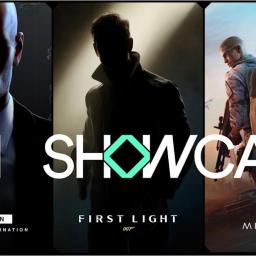 |
by Anna Washenko on (#6XPRX)
Game developer and publisher IO Interactive is participating in Summer Games Fest 2025 with its own showcase. The presentation will take place on Friday, June 6 at 9PM ET/6PM PT. You can watch the IOI Showcase live on multiple platforms: Twitch, YouTube and TikTok. We've also got the YouYube stream embedded above, so that you can watch here while keeping up with our coverage of all the other developments happening during this year's packed Summer Games Fest lineup.IO Interactive parlayed its work on the excellent Hitman trilogy into a gig making a new James Bond game. Today, the company teased the title, 007 First Light, and it seems like there will be a game reveal during the showcase on Friday. The presentation will also introduce new content for the studio's Hitman World of Assassination and as well as a game called MindsEye from its publishing branch. "We've prepared some truly exciting surprises" for the event, IO Interactive CEO Hakan Abrak said, so there will probably be additional announcements beyond those three titles.This article originally appeared on Engadget at https://www.engadget.com/gaming/how-to-watch-the-ioi-showcase-at-summer-games-fest-2025-200751318.html?src=rss
|
 |
by Ian Carlos Campbell on (#6XPRY)
Google is still waiting to hear how it will have to address its monopoly in the search engine business - it plans to appeal the judgement - but in the meantime, it also has to answer to its shareholders. According to a report from The Financial Times, Google's parent company Alphabet has reached a preliminary settlement with shareholders who were also suing the company for allowing Google's anticompetitive behavior, which they believe exposed the company to "reputational damage" and "substantial costs."The new settlement will reportedly force Alphabet to rebuild its "global compliance structure" and will cost the company a minimum of $500 million over the next 10 years to make it happen. At its most basic, this means establishing some kind of committee within the Alphabet board to oversee regulatory issues, of which Google has accrued many in the last few years."A new body made up of senior executives would meanwhile report directly to chief executive Sundar Pichai," FT writes, while another group "consisting of product managers and internal compliance experts," would consult. The goal is to prevent Alphabet and its subsidiaries from making the kind of business decision that led to Google being deemed a monopoly on multiple counts. A judge will need to approve the settlement before the company can move forward, though.The case against Alphabet officials like Sundar Pichai and Sergey Brin was originally brought by a Michigan pension fund on behalf of shareholders back in 2021. In comparison to the structural changes the US Department of Justice is requesting, paying some money and forming some committees is a small ask. In the grand scheme of things, changing how Alphabet deals with regulation will likely be one of the more minor ways the company's business is forced to change in the next few years.This article originally appeared on Engadget at https://www.engadget.com/big-tech/alphabet-settles-with-shareholders-over-google-antitrust-lawsuit-195636653.html?src=rss
|
 |
by Kris Holt on (#6XPPK)
We've seen a few Xbox-styled kitchen items over the last few years, from the Series X fridge to the Series S toaster. The latest one is probably not one for those of you in the US. Over the weekend, Xbox Canada revealed a Xbox Series X bagged milk pitcher styled after the Xbox Series X.Milk in a bag is a long-standing tradition in Canada, India, South America and several other parts of the world. The idea is that you plop a bag into a pitcher, cut off the corner and pour away, all the while taking great care not to spill any.There are practical benefits, such as bags taking up less space in garbage or recycling. But containers for bagged milk are typically boring white jugs. At least until now.
|
 |
by Andre Revilla on (#6XPPM)
Stig Asmussen, the game industry veteran who directed God of War III and Star Wars Jedi: Survivor and Fallen Order, is developing a single-player action-adventure game set in the world of Dungeons & Dragons in partnership with publisher Wizards of the Coast.This will be the first project for Asmussen's studio Giant Skull since its founding in late 2023. In a press release sent to Engadget, the studio shared it is "dedicated to building gameplay-driven, story-immersed action-adventure games." The new project will be built on the Unreal 5 engine and is currently in development for PC, with console details coming at a later date. No specific release dates, renderings or game content has been shared as of yet, making it unlikely this game will be out before 2026.John Hight, president of Wizards of the Coast (the owners of the iconic tabletop RPG), said "Stig and the team at Giant Skull are exactly the type of exceptionally talented creators we want to work with and I'm so happy to be reuniting with him on this new project." Stig Asmussen shared that the studio's goal is to "craft a rich new Dungeons & Dragons universe filled with immersive storytelling, heroic combat and exhilarating traversal that players will fully embrace."This new project comes as Wizards of the Coast moves on from its deal with developer Larian Studios, the team behind the widely-acclaimed Baldur's Gate 3. The Hasbro-owned publisher has a slew of games in the pipeline in partnership with various game studios in the United States and Canada. These include the sci-fi RPG Exodus, which is being developed by Archetype Entertainment, and Atomic Arcade's Snake Eyes, which is based on the G.I. Joe.This article originally appeared on Engadget at https://www.engadget.com/gaming/pc/a-single-player-dungeons-dragons-game-is-in-development-172635380.html?src=rss
|
 |
by Billy Steele on (#6034S)
Father's Day is just before the official start of summer, so it's an ideal time to grab some outdoor gear dad can use for the warmer weather. I've selected a number of options covering a variety of interests, so if your pops is a beach bum, hiker, aspiring pitmaster, amateur pizzaiolo or just likes to hang out around the fire pit, you'll find a gift idea for them here. Smart grills, a handy grilling companion, a Bluetooth speaker and more are on the list and ready for all of the summer vibes. Plus, most of this stuff can be used year-round, so dad will be reminded of your gift-giving prowess all year long. This article originally appeared on Engadget at https://www.engadget.com/best-outdoor-gift-ideas-for-dad-154513097.html?src=rss
|
 |
by Cheyenne MacDonald on (#6XP4S)
This year's Summer Game Fest will feature a new showcase for games that highlight environmental causes and make direct contributions to real-world sustainability efforts. The Green Games Showcase, led by the not-for-profit PlanetPlay, will be held on Saturday, June 7 at 4:00PM ET (1:00PM PT) and streamed live on YouTube.PlanetPlay says the event will be "a celebration of game studios that have raised over $100,000 for certified environmental projects around the world." Those projects so far include Abundant Village, a regenerative garden project in South Africa; the carbon forestry project WithOneSeed in Timor-Leste; The Hongera Clean Cookstove project in Kenya; and The Teeny Tiny Truth, which aims to reduce microplastics in New Zealand's fresh water systems.The Green Games Showcase is one of several streams that are set to take place between Summer Game Fest Live on Friday and the Xbox Games Showcase on Sunday. Be sure to also check out Day of the Devs, Devolver Direct, Wholesome Direct, the Women-Led Games Showcase, the Latin American Game Showcase and the Southeast Asian Games Showcase. It'll all wrap up with a Death Stranding 2: On the Beach premiere event, where you can get an early look at the game ahead of its release on June 26.This article originally appeared on Engadget at https://www.engadget.com/gaming/how-to-watch-the-green-games-showcase-at-summer-game-fest-2025-000057640.html?src=rss
|
 |
by Jackson Chen on (#6XP42)
There will be no shortage of gaming news to come out of Summer Game Fest 2025, but don't forget about the first-ever Frosty Games Fest that will highlight more than 50 video games made in Australia and Aotearoa New Zealand. The showcase will kick off its YouTube and Twitch livestreams on Saturday June 7 at 7PM ET.Organized by industry professionals from the region, Amy Potter, Kieron Verbrugge, Lucy Mutimer and Pritika Sachdev will take us through some upcoming and recently released games from Oceania. If you prefer, you can also tune into the event with various co-streamers, which can be found at Frosty Games Fest's Bluesky account.To close out Saturday's festivities, Frosty Games Fest will shine a light on titles like Sub-Verge, a psychological narrative puzzle game that takes place underwater from Interactive Tragedy, Limited, and Winnie's Hole, a turn-based roguelite based on the Winnie the Pooh franchise from Twice Different. The Melbourne-based 10PM Club will also debut its teaser trailer for REAPRIEVE, where you follow a grim reaper at an office desk who's tasked with deleting a soul's memories. Be sure to follow our live reporting of Summer Game Fest 2025, where we'll be on site to cover the latest gaming announcements.This article originally appeared on Engadget at https://www.engadget.com/gaming/how-to-watch-the-frosty-games-fest-at-summer-game-fest-2025-220039256.html?src=rss
|
 |
by Jackson Chen on (#6XP1M)
We're expecting a ton of AAA and indie game announcements during Summer Game Fest 2025, but the Southeast Asian Games Showcase will highlight the best games coming out of the region. The event will offer some exclusive reveals, new trailers and update announcements on more than 45 titles from Southeast Asian game developers. You can catch all the news through the YouTube livestream, which will start Saturday, June 7 at 3PM ET.The showcase teased some updates with Polychroma Games' Until Then, a narrative adventure game set in a fictional Filipino city, Bit Egg's Lost & Found Co., a quirky hidden object game, and kopiforge's SEDAP! A Culinary Adventure that's equal parts co-op cooking and combat.Right before the Southeast Asian Games Showcase, you'll be able to catch the Latin American Games Showcase at 2PM ET and the Women-Led Games Showcase at 1PM ET, both on June 7. For the rest of the Summer Game Fest 2025, tune into Engadget's coverage, where we'll have in-person reports on some of the biggest gaming announcements expected during the event.This article originally appeared on Engadget at https://www.engadget.com/gaming/how-to-watch-the-southeast-asian-games-showcase-at-summer-game-fest-2025-181518526.html?src=rss
|
 |
by Jackson Chen on (#6XP0M)
The complex and consequential antitrust trial against Google and its search engine practices recently heard its closing arguments, and the tech giant is already planning to appeal. In a post made on X, Google confirmed it would file an appeal, explaining that the proposed solutions went too far and "would harm consumers."We will wait for the Court's opinion," Google wrote. And we still strongly believe the Court's original decision was wrong, and look forward to our eventual appeal."To challenge Google's dominance of the search engine market, the Department of Justice took on the tech giant by filing a lawsuit back in 2020. The monumental antitrust case has steadily evolved over the years, with the DOJ proposing remedies like Google opening up its search engine tech to licensing, prohibiting agreements with device makers like Apple and Samsung to ensure Google was the default search engine and forcing the sale of the Chrome browser and the open-source Chromium project.According to Google, the Department of Justice's proposed actions would open consumers up to "very real privacy issues," leave the government in charge of user data and help "well-funded competitors." Instead, Google offered to loosen its agreements to allow other search engines on devices and create an oversight committee to monitor the company's activities.Since then, the federal judge presiding over the case, Amit Mehta of the US District Court for the District of Columbia, ruled in August 2024 that Google had an illegal monopoly of the search engine market. The judge agreed with the DOJ that Google owning the Chrome browser gives it an unfair advantage since it could use its search engine advantage to drive more traffic and generate more revenue for the company.The end result of this antitrust trial could have serious implications for the future of AI, which is closely tied to the search engine market. According to Google, this ruling could allow other companies with AI chatbots to step in and dominate the search engine market instead. During the trial, Nick Turley, an OpenAI executive, testified that the company would be interested in buying Chrome if Google was forced to sell it.This article originally appeared on Engadget at https://www.engadget.com/big-tech/google-plans-to-appeal-the-antitrust-ruling-against-its-search-engine-dominance-171748836.html?src=rss
|
 |
by Jackson Chen on (#6XNZA)
NASA's next mission will be to find a new agency leader, following a dramatic reversal from President Donald Trump. In a post made on Truth Social, the president withdrew his nomination of Jared Isaacman as the head of NASA. As first reported by Semafor, the pullback comes just a few days before Isaacman was due in front of the US Senate for a confirmation vote.Trump detailed in the post that he will soon announce another nominee who is more aligned with the president's mission and will "put America First in Space." Liz Huston, a White House spokesperson, said in a statement that it was "essential that the next leader of NASA is in complete alignment with President Trump's America First agenda." According to The New York Times, unnamed sources attribute the withdrawal to Isaacman's previous donations to "prominent Democrats."Besides his role as CEO of payment processing company Shift4, Isaacman has been venturing into the world of commercial space travel. The billionaire businessman has been to space twice now, even serving as the mission commander of the Polaris Dawn mission that was operated by SpaceX and saw the first commercial spacewalk. Isaacman was known as a close ally of Elon Musk, who is the CEO of SpaceX and recently left his White House role as an adviser to the president.This article originally appeared on Engadget at https://www.engadget.com/science/space/trump-makes-a-last-minute-backtrack-on-his-pick-to-lead-nasa-153253836.html?src=rss
|
 |
by Cheyenne MacDonald on (#6XNZB)
The long, long wait for Stranger Things 5 is almost over. Netflix has finally revealed the release date for the show's fifth and final season: November 26. At least, that's when the first part will drop. Just like Season Four, Stranger Things 5 will be released in chunks, so you won't be able to binge it all in one go from the outset. Volume One, which will have four episodes, comes out on November 26 at 8PM ET (5PM PT), followed a month later by three episodes for Volume Two on Christmas (December 25) and the final episode on New Year's Eve (December 31).If you need a little refresher on where we're picking back up with the Hawkins crew - I sure do - here's the synopsis for Season Five:
|
 |
by Cheyenne MacDonald on (#6XNN8)
Summer Game Fest 2025 is just around the corner and it'll be a weekend packed with video game news. The event kicks off on June 6, with roughly a dozen livestreams scheduled to take place from then through June 8. Among them is the Latin American Games Showcase, which will highlight over 50 titles from Latin American indie developers. You can tune into the YouTube stream on Saturday, June 7 at 2PM ET (11AM PT).Last year's Latin American Games Showcase at SGF gave us a glimpse at a ton of games to be excited about, like the recently released title, Despelote, that's both memoir and soccer game. We don't know yet what the 2025 showcase will bring, but there's sure to be some gems. Before the Latin American Games Showcase on Saturday, Summer Game Fest Live will usher in the festivities on June 6 at 5PM ET (2PM PT).We have all the info you need to know right here ahead of Summer Game Fest and will be on the ground getting some hands-on time with many of the games you'll see featured in the showcases, so be sure to check back in for the latest news.This article originally appeared on Engadget at https://www.engadget.com/gaming/how-to-watch-the-latin-american-games-showcase-at-summer-game-fest-2025-210009391.html?src=rss
|
 |
by Cheyenne MacDonald on (#6XNME)
According to a report from NPR, Meta plans to shift the task of assessing its products' potential harms away from human reviewers, instead leaning more heavily on AI to speed up the process. Internal documents seen by the publication note that Meta is aiming to have up to 90 percent of risk assessments fall on AI, NPR reports, and is considering using AI reviews even in areas such as youth risk and "integrity," which covers violent content, misinformation and more. Unnamed current and former Meta employees who spoke with NPR warned AI may overlook serious risks that a human team would have been able to identify.Updates and new features for Meta's platforms, including Instagram and WhatsApp, have long been subjected to human reviews before they hit the public, but Meta has reportedly doubled down on the use of AI over the last two months. Now, according to NPR, product teams have to fill out a questionnaire about their product and submit this for review by the AI system, which generally provides an "instant decision" that includes the risk areas it's identified. They'll then have to address whatever requirements it laid out to resolve the issues before the product can be released.A former Meta executive told NPR that reducing scrutiny "means you're creating higher risks. Negative externalities of product changes are less likely to be prevented before they start causing problems in the world." In a statement to NPR, Meta said it would still tap "human expertise" to evaluate "novel and complex issues," and leave the "low-risk decisions" to AI. Read the full report over at NPR.It comes a few days after Meta released its latest quarterly integrity reports - the first since changing its policies on content moderation and fact-checking earlier this year. The amount of content taken down has unsurprisingly decreased in the wake of the changes, per the report. But there was a small rise in bullying and harassment, as well as violent and graphic content.This article originally appeared on Engadget at https://www.engadget.com/social-media/meta-will-reportedly-soon-use-ai-for-most-product-risk-assessments-instead-of-human-reviewers-205416849.html?src=rss
|
 |
by Mariella Moon on (#6XNKC)
The Women-Led Games Showcase will be returning for its second year at the Summer Game Fest 2025. It will feature 39 titles from women-led and majority women development teams, and viewers can expect to see deep dives, release announcements and information on DLCs during the event. The Showcase will take place on June 7 at 1PM Eastern time and will be streamed live on Twitch and YouTube, which is embedded below. You can also watch the stream through various co-streamers' Twitch channels that you can find from the Women-Led Games' X account. Take note that the team will also be running a Steam sale event from June 6 to 13 for women-led titles.In addition to this showcase, Summer Game Fest 2025 will also feature several other events, such as Day of the Dev for indie titles and Wholesome Direct for cozy games. There will be a showcase for titles created by Latin American developers, a Green Games event for titles that make direct contributions to green initiatives and an Xbox Games Showcase for updates on titles from across Xbox Game Studios, Bethesda and Activision Blizzard. You can also watch the live premiere for Death Stranding 2: On The Beach on June 8 at 10PM Eastern time.This article originally appeared on Engadget at https://www.engadget.com/gaming/how-to-watch-the-women-led-games-showcase-at-summer-game-fest-2025-190005489.html?src=rss
|
 |
by Jackson Chen on (#6XNKD)
Just a day after its release, FromSoftware announced a crucial patch for Elden Ring Nightreign players who prefer to solo queue. The game's developer posted on X that Patch 1.02 will be released next week, delivering some bug fixes and "improvements for solo expeditions."More specifically, FromSoftware will add the effect of Automatic Revival Upon Defeat" that allows a self-revival once per night boss battle for solo expeditions. Players will also get more runes, which should provide a more balanced gaming experience when venturing alone. This news of this patch follows several criticisms of the game being poorly optimized when playing solo, versus in a party of three as it was designed for.FromSoftware's titles have a reputation for being difficult, but early reviews pointed out that Nightreign offers poor scaling with certain mechanics, abilities and boss fights that cater towards a full party. Despite the millions of copies sold on the first day, Nightreign holds a "mixed" Steam user review rating thanks to the solo queue issues, along with a lack of communication tools, cross-platform play and less replayability than other Souls titles.For FromSoftware, Elden Ring Nightreign represents a stylistic shift into the roguelike genre based on its best-selling predecessor and it might still be working out some of the kinks. The game's director, Junya Ishizaki, told IGN in an interview that jumping into an expedition as a duo was overlooked during development" but is something that the developer is looking at and considering for post-launch support. Some players are also having issues with matchmaking itself, where FromSoftware recommends restarting the process to get into an expedition. As for rebalancing for solo play, FromSoftware said that more details about this upcoming patch will come next week.This article originally appeared on Engadget at https://www.engadget.com/gaming/elden-ring-nightreigns-next-patch-will-make-gameplay-easier-for-solo-players-183644323.html?src=rss
|
 |
by Jackson Chen on (#6XNJV)
Nebraska is the latest state to crack down on how kids can use social media. The state's governor, Jim Pillen, recently signed into law a package of bills aimed at restricting certain social media features that keep kids hooked on the platform. The final bill signed, called the Age-Appropriate Online Design Code Act, will require companies to offer time limits on usage, restrict certain categories of content and provide chronological feeds instead of algorithmic ones that promote infinite scrolling.The Age-Appropriate Online Design Code Act, also known as LB504, details that social media companies can only collect the minimum amount of personal data from younger users, and offers parents more tools to limit how their children use their accounts. Along with those restrictions, the law prohibits any ads related to gambling, alcohol, tobacco or drugs from reaching kids on social media.Alongside LB504, the signed package of bills includes LB140 that limits student use of smartphones in schools, LB383 that requires social media companies to verify the age of its users and require parental consent for creating accounts, and LB172 that creates criminal penalties for AI-generated pornography."Collectively, all these bills have an incredible impact on helping our teachers and giving our schools the opportunity to teach our kids, instead of being disrupted in the classroom," Pillen said in a press release. "They also provide parents with the tools they need to protect our kids from big tech online companies and predators."The law is set to go into effect January 1, 2026, and any companies that violate these new regulations will face civil penalties. Nebraska is the latest state to restrict social media usage for minors, but Texas is also trying to pass a similar ban. With more efforts to regulate social media, NetChoice, an Internet advocacy organization whose members include Google, Meta and X, has voiced criticism of these states' efforts, arguing that they infringe on First Amendment rights and user privacy. In 2022, California signed a similar law meant to protect underage users, but it has since been in a legal battle following a lawsuit filed by NetChoice that claims a violation of free speech rights.This article originally appeared on Engadget at https://www.engadget.com/social-media/a-new-nebraska-law-wants-to-make-social-media-less-addictive-for-kids-171510432.html?src=rss
|
 |
by Will Shanklin on (#6XNJW)
Devolver Digital is devoting its Summer Game Fest stream to a single title. That's quite the departure for the Austin-based publisher. So, the company must see something special in Ball x Pit: The Kenny Sun Story. Get ready to find out about it on June 6.Devolver isn't being shy about its enthusiasm for Ball x Pit. The publisher says it's a game the team "can't even put down - hundreds of hours later." Sounds promising!So, what do we know about the game and its titular character? Not much. There's the teaser image above, featuring battle skeletons and other fantasy characters. Also, Devolver called it "a tremendous little game."Expect to learn much more about Ball x Pit on June 6 at 8 PM ET. You can tune into Devolver Direct on YouTube and Twitch. (That's the same broadcast as the Summer Game Fest Live and Day of the Devs livestreams.)This article originally appeared on Engadget at https://www.engadget.com/gaming/how-to-watch-devolver-direct-at-summer-game-fest-2025-170014340.html?src=rss
|
 |
by Will Shanklin on (#6XNHY)
The indie-focused Day of the Devs is nearly here. That's the portion of Summer Game Fest where smaller publishers step into the spotlight. It tends to be a worthwhile watch, often eclipsing the main show. Get ready to tune in on June 6.What's on tap this year? Heart Machine's 2D sidescroller Possessor(s) will make an appearance. If you like hand-drawn art, horror and visual novels, this is your game. (Oh, and don't forget "very hot" demons!)We'll also see more of Outersloth's "nightmarish life sim" Neverway. That title has a killer elevator pitch. "After quitting her dead-end job, Fiona starts over on a farm and becomes the immortal herald of a dead god." (As one does!)Big WalkHouse HouseUntitled Goose Game maker House House is on the schedule. That will presumably mean a closer look at Big Walk. The "cooperative online walker-talker" eschews the hardcore competition common in online gaming. "Our favorite part of playing online coop games is when they give you enough direction for the group to keep up a good momentum," the studio said in 2023. "But it's relaxed enough that you're mostly just able to enjoy spending time with your friends." Expect a chill time with delightfully strange characters.Expect much more beyond that small sampling. Day of the Devs kicks off on June 6 at 7PM ET. You can also stream it on YouTube and Twitch. Engadget will also be on the ground at Summer Games Fest with plenty of first-hand impressions.This article originally appeared on Engadget at https://www.engadget.com/gaming/how-to-watch-day-of-the-devs-at-summer-game-fest-2025-150047219.html?src=rss
|
 |
by Cheyenne MacDonald on (#6XNGJ)
Playdate Season Two is here, bringing with it two new games for the quirky yellow handheld every week until July 3. And if the first two titles are any indication of what this season will be like, it's sure to be a great one. Season Two kicked off on May 29 with the arcade action game Fulcrum Defender - from the studio behind FTL: Faster Than Light and Into the Breach - andthe delightfully chill Dig! Dig! Dino!. The two games couldn't be more different from each other, but they're both bangers in their own right.Panic also released Blippo+, which can only be described as a fever dream of cable TV,with the first drop of Season Two, and it is amazingly bizarre.Fulcrum DefenderSubset Games"Survive for 10min!" sounded almost like a threat when I first started reading through Fulcrum Defender's How To Play guide. Between all the on-screen information you need to pay attention to, the many different types of enemies that'll be attacking and the various weapon upgrades you can earn over the course of a run, there's a lot to take in, and I braced myself for a tense and complicated playing experience. But, while that may be closer to the case on Hard Mode, I found that Fulcrum Defender wasn't all that punishing of a shooter on Normal Mode. It's a challenge, for sure, but one with a surprisingly achievable goal that I was able to enjoy without losing my mind. At least, not until crossing the 10-minute mark. After that, all hell breaks loose.In Fulcrum Defender, you're positioned at the center of a circular arena and have to fend off a continuous swarm of enemies. Your shield will take damage any time an enemy collides with it, and once enough have breached that zone, it's game over. To avoid that, you need to shoot them down one by one, using the crank to aim your weapon and the D-pad to shoot. Some enemies can be taken out in one shot, but others - distinguished by their filled-in appearance - require multiple shots. Over time, you'll earn weapon upgrades to build out a more powerful defense system, with options like large, guided projectiles and a flail that can knock out several enemies in one sweep.It's unexpectedly addicting. The music is beautiful and calming, giving the whole thing a pleasant atmosphere despite the fact that you're surrounded by enemies at any given moment and trying not to die. Once I realized it was absolutely possible to survive 10 minutes and even go beyond that, I got sucked into the loop of trying over and over to beat my high scores. I'd love to see a global leaderboard for this game at some point, because I just know I'd be floored by how long some players will be able to last.If you liked this one and want to know a little more about the making of it, be sure to check out our interview with Jay Ma, the co-founder of Fulcrum Defender developer Subset Games.Dig! Dig! Dino!Dom2D & FayerI can't think of anything I'd rather be doing right now than pretending to be a paleontologist and casually digging for bones. No thoughts, just dig. That's exactly what Dig! Dig! Dino! has going on, and it's awesome.You're working as part of a crew (made up entirely of anthropomorphic animals) at the site of some really unusual dinosaur fossils, and it's your job to dig up new bones and artifacts. Once you've got the entire skeleton of a particular dinosaur, you can scan it in the lab to reveal what it was like when it was alive. That information, coupled with the peculiar artifacts scattered around the site, paints a picture of some pretty strange activities that went on there long ago. For example, some of these dinosaurs seem to have had crystals growing out of their bodies, and it looks like they were warned about the asteroid extinction event. Fishy!The gameplay is extremely low stakes - this is one for when you just want to zone out playing something that'll keep your hands busy. You're equipped with a shovel, a drill and a radar gadget for detecting items beneath the surface, and have no time-sensitive goals to hit. You only have so much energy, though, which will be consumed with each use of your tools. When you run out, the round is over. But you can visit each site as many times as you need to in order to find all of the dinosaur pieces hidden there, so it can be a really casual undertaking if you want it to be.It's a really nice time, with a fun story to tie it all together. You'll get a solid few hours of playtime out of this, too, and the simplicity of it all means you can put it down and come back to it later without having to rack your memory to figure out where you left off. I loved this one.Blippo+PanicWhat can one even say about Blippo+? This bizarre "1-bit television" experience came as a bonus with the first Season Two games, and it is something. Panic first teased it back in December 2024 as a Steam title, but here it is for the Playdate now, complete with a roster of channels playing hallucinatory programs and Femtofax, an interactive message board of sorts where you can find affirmations, neighborhood drama, chatter among amateur astronomers and more. Panic describes it as being "comparable to an old episode of The Twilight Zone," but it's more like an old episode of The Twilight Zone if it were made by Tim & Eric and aired after midnight on Adult Swim. I think I am obsessed with it?I'm really interested to see where this goes. I would totally park my Playdate in a dock (but not the Stereo Dock </3) on my desk and leave Blippo+ running in the background all day if it has enough fresh material to sustain it. The song playing alongside the endlessly scrolling Blippo+ TV guide screen is already stuck in my head, and I don't hate it. The program guide with this week's schedule is online, if you're curious about what's going on right now.This article originally appeared on Engadget at https://www.engadget.com/gaming/playdate-season-2-review-fulcrum-defender-dig-dig-dino-and-blippo-140036697.html?src=rss
|
 |
by Mariella Moon on (#6XNFD)
It's no secret that 28 Years Later used iPhones to shoot parts of the film. Now its director, Danny Boyle, has discussed the use of iPhones for the film in more detail with IGN. The first film in the franchise, 28 Days Later, was shot on digital video, giving it a homemade feel. Boyle explained that he and writer Alex Garland got the idea from the fact that home video cameras were common at the time, and people would've shot videos with them if an apocalypse had indeed happened. Those cameras, of course, have since been replaced by smartphones.The movies used three special rigs for the iPhone sequences: One for eight cameras that one person can carry, another with 10 and another with 20. "I never say this, but there is an incredible shot in the second half [of the film] where we use the 20-rig camera, and you'll know it when you see it," Boyle told IGN. He described the 20-iPhone rig as "basically a poor man's bullet time," which is a visual effect that uses multiple cameras to freeze or slow down time. Think the scene in The Matrix, wherein Neo dodged bullets in super slow motion.Doyle said that the 20-camera rig can be attached to cranes or dollies and give you 180 degrees of vision of an action. In editing, you can choose from any of the footage each iPhone takes to, say, move between perspectives or jump forward and backward. For 28 Years Later, the team used the rig for violent scenes to emphasize their effect. "For a moment the audience is inside the scene, the action, rather than classically observing a picture," Doyle explained.In addition to the iPhones, the filmmakers also used drones, cameras attached to actors and even farm animals to achieve an immersive feel for its 2.76:1 widescreen aspect ratio. They decided on the aspect ratio to create a sense of unease, since you'd have to keep scanning the screen to see potential threats coming from the sides.SonyThis article originally appeared on Engadget at https://www.engadget.com/entertainment/28-years-later-used-20-iphones-in-tandem-for-some-wild-shots-130043338.html?src=rss
|
 |
by Kris Holt on (#6XNEK)
One of the many beautiful things about the indie gaming scene is that there's always something to check out. So if you don't fancy playing Elden Ring: Nightreign this weekend, there are plenty of other new options. To help you keep up with what's going on in the space, here's our weekly indie game roundup.As a heads up, we won't be publishing an edition of this roundup next week. Not because there won't be enough games to highlight. Quite the opposite: Summer Game Fest kicks off on Friday June 6. There will be literally hundreds of game announcements and updates. There's also the small matter of the Nintendo Switch 2's arrival in a matter of days.You can check out what to expect from SGF and find out how to watch the various showcases in our preview. We'll be bringing you news on titles of all shapes and sizes from Summer Game Fest Live, Xbox Games Showcase and other events. We'll also be on the ground in Los Angeles to go hands on with many of the newly announced games. Keep up with our coverage here on Engadget throughout SGF.In the meantime, there are a host of new games to savor, as well as peeks at what's coming your way in the coming weeks and months. Let's get to it.Thinky DirectThis showcase from Thinky Games was jam packed with captivating puzzle and mystery games. Two in particular caught my eye. The first is a very intriguing first-person archery puzzler. In He Who Watches, you'll walk on walls, rotate rooms and use a bow and arrow to solve puzzles. It reminds me of the shrines in The Legend of Zelda: Breath of the Wild and Tears of the Kingdom. A demo is out now on Steam and the full game should arrive this fall.The other game that really stood out to me was Echo Weaver, a so-called "Metroidbraina." Unlike in many Metroidvanias, where you need to find power ups or new abilities to progress, here you'll move forward by acquiring knowledge, including figuring out your character's special abilities.There aren't any procedurally generated elements here. As with the likes of Outer Wilds, each run is time-based. You can find ways to extend the limit or sacrifice some time to pass through a barrier. Echo Weaveris coming to Steam and Xbox (including Game Pass).There was lots of other interesting stuff in the first-ever Thinky Direct. I really enjoy the chill train puzzler Railbound and it was neat to find out that there's a level editor available in beta. Kiko's Apple Adventureis an adorable-looking block-pushing game in which the aim is to nudge apples onto rafts. It just arrived on Steam.The Button Effect features a museum with a lot of buttons, each with a purpose for you to find out. It seems like a certain Taskmaster task taken to new extremes. The first public demo just hit Steam.Nonolith is another compelling game that was featured in the showcase. In this puzzle platformer, you can copy and paste blocks to create openings, bridges and staircases. At first glance, it reminds me a little of Animal Well. Monolith is coming to Steam in 2026.New releasesOne thing definitely worth getting excited about this week if you own a particular yellow console with a crank owner is the start of Playdate Season Two. Every Thursday throughout the six-week season (which costs $39), two new games arrive on Panic's diminutive device.The first batch includes the charming-looking Dig! Dig! Dino! and Fulcrum Defender. The latter of those is from FTL: Faster Than Light and Into the Breach studio Subset Games, whose co-founder Jay Ma went through hell to make Fulcrum Defender.One of the titles included in the season, Blippo+, is a full-motion video game. It will have weekly episodic updates for 12 weeks, extending far beyond the rest of the Season Two window. The first episode is out now.Trails is a lovely puzzle game that just landed on Steam. You'll guide sandships to their destination by drawing a path for them. You can't take a ship through the same square twice, and you'll need to make sure they don't crash into each other. There are obstacles, of course, and you'll sometimes have to collect and deliver cargo.I've enjoyed my time with Trails so far. Developer PurpleSloth gradually teaches you how to play through trial and error, and it adds new hazards and mechanics at a nice pace, though the puzzles do become quite tricky.You may have spent many pleasant hours cleaning grime off of various objects and iconic landmarks in PowerWash Simulator (which is set to get a sequel later this year). It's time to flip the script a bit in Spray Paint Simulator, from North Star Video Games and publisher Whitethorn Games.The concept is pretty similar, in that you'll complete jobs for clients by painting certain items or environments. There are no time limits here and a feature that lets you mask an area to ensure you get clean lines is a nice touch. If marking your territory on public or private property with sick, definitely-not-ugly tags is more your thing, there's a free spray mode that you can play alone or with a friend in co-op.Spray Paint Simulator is out now on Steam, PS4, PS5, Xbox One and Xbox Series X/S. It's on Game Pass too. The game is also coming to Nintendo Switch on June 19.Eternal Evil debuted on Steam back in 2022, and two and a half years later, the survival horror game has made the jump to PS5 and Xbox Series X/S. It has mostly positive reviews on Steam and seems very much in the vein of the Resident Evil series (it even has a dual narrative with two characters to play). You'll take on vampires that get stronger as they feed in this game from solo developer Honor Games.How could I not include a game with a name like Trash Goblin? This is a cozy shopkeeping title from Spilt Milk Studios that just came out of early access on Steam. You'll unearth, restore and upcycle trinkets to sell to customers so you can upgrade your shop. It seems one you might chill out with.Elsewhere, To a T, a game we mentioned last week, is out now on Xbox Series X/S, Game Pass, PS5, Steam and the Epic Games Store. Cowboy-themed life sim Cowboy Country just landed on Steam, PlayStation, Xbox and Nintendo Switch as well.UpcomingI've had my eye on Kingmakersfor a while. It's a completely bananas-looking blend of third-person shooting and strategy game from Redemption Road in which you travel back in time to a medieval war, bringing modern weapons and vehicles with you. Publisher tinyBuild revealed during a showcase this week that Kingmakers will debut in early access on Steam on October 8. Really looking forward to that one.Beyond the Board is a moody-looking adventure that takes a rook... well, beyond a chess board. It takes inspiration from puzzle games like Limbo and Monument Valley, so it shouldn't be too much of a surprise that the story is told through visual storytelling and soundscapes rather than dialogue. This game from Fragile Shapes Studio doesn't yet have a release window, but you can check out a demo on Steam now.An extended demo for a fast-paced, melee-focused dungeon runner called Bloodthiefdropped this week. It looks like a lo-fi, medieval spin on Ghostrunner (a series I enjoy but am quite bad at) but with vampires. So yes, I will be digging into this when I have a chance. The original demo is said to have 20 or so hours of gameplay and there's even more in the extended version, which will be featured in Steam Next Fest. Bloodthief, from developer Blargis, is slated to arrive later this year.I'm going to close this edition out with a game you'll probably never be able to play. Developer Kenney says that, a few years back, they helped a young Star Wars fan make a game based on The Mandalorian after a Make-a-Wish connected the pair. It's a heartwarming story, and the game looks quite charming based on the clip that Kenney shared on BlueSky. However, for legal reasons, it'll likely stay under lock and key, sadly.This article originally appeared on Engadget at https://www.engadget.com/gaming/playdate-season-two-spray-paint-simulator-and-other-new-indie-games-worth-checking-out-110035699.html?src=rss
|
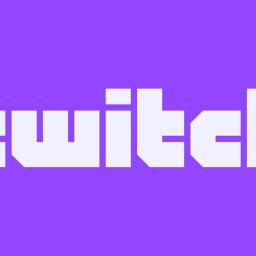 |
by Will Shanklin on (#6XNDJ)
Twitch is getting more TikTok-ified with vertical game streaming. Also, "2K" (1440p) video will let you watch that League of Legends stream in a higher resolution. The ability to rewind streams is coming, too. CEO Dan Clancy made the announcements on Saturday at TwitchCon Europe.Portrait-mode streaming makes it a little easier to watch gameplay on your phone. Until now, Twitch only supported the orientation for clips and IRL streams. Clips are short highlights that creators can share after a stream ends. And "In Real Life" content shows everyday activities rather than gameplay.But some screens work much better in a landscape view. Fortunately, Twitch is also rolling out a dual-format mode. Creators can go live in vertical and horizontal orientations at once. You can watch the version that works best for your device. The company will begin testing "with a small number of channels" this summer. It will expand access later this year.Twitch's 1440p streams should be a welcome addition. (Who doesn't like a sharper-looking video?) On the back end, it uses a newer HEVC codec that produces a better picture with a lower bitrate. And the platform's Enhanced Broadcasting tech automatically tweaks the viewer's resolution.The 1440p streaming begins rolling out today to all partners and affiliates. But it's in an open beta, so creators may need to wait for access.Finally, Twitch is rolling out a rewind feature. If you miss part of a stream, you can scrub back to catch up on what you missed. That feature isn't quite here yet, either. Twitch will test it with "a small number of viewers" this summer.This article originally appeared on Engadget at https://www.engadget.com/entertainment/streaming/twitch-is-adding-1440p-and-vertical-streaming-091533811.html?src=rss
|
 |
by Ian Carlos Campbell on (#6XN78)
Playtonic, the creators of Yooka-Laylee, is laying off some of its staff, the developer and publisher announced on social media. The post doesn't mention how many members of Playtonic will be effected, but does credit the layoffs to the company's struggle with "a period of profound change in how games are created and funded."Based on a LinkedIn post shared by Playtonic brand manager Anni Valkama, the layoffs include staff members who worked in production, various art departments, game design, narrative design and UI/UX design. Playtonic only lists around 50 staff members on LinkedIn, but given the studios growth into a publisher and its upcoming release of Yooka-Replaylee,its possible the actual team is a bit larger.
|
 |
by Ian Carlos Campbell on (#6XN57)
After two years of negotiating, ZeniMax Workers United-CWA, the union representing quality assurance workers at ZeniMax Media, has reached a tentative union contract with Microsoft, according to the Communication Workers of America. The union originally formed in 2023 and was immediately recognized by Microsoft, which made its commitment to stay neutral towards union organizing at ZeniMax official in 2024.The new contract will cover over 300 ZeniMax employees and includes "substantial across-the-board wage increases as well as new minimum salaries for workers," the CWA says. The contract also includes language protecting workers from the impacts of AI and "a crediting policy that clearly acknowledges the QA workers' contributions to the video games they help create.""Video games have been the revenue titan of the entire entertainment industry for years, and the workers who develop these games are too often exploited for their passion and creativity," Jessee Leese, a QA tester and ZeniMax Workers United-CWA bargaining committee member shared in the CWA announcement. "Our first contract is an invitation for video game professionals everywhere to take action. We're the ones who make these games, and we'll be the ones to set new standards for fair treatment."The new contract is considered "tentative" until union members ratify it, but because existing contracts often act as a reference in ongoing negotiations, the agreements ZeniMax workers secured will likely serve as a standard for other unions going forward. ZeniMax QA testers aren't the only video game union at Microsoft - QA workers at Raven Software, QA workers at Activision, workers at ZeniMax Online Studios and the development team behind Overwatch are all still in active negotiations with the company.Outside of Microsoft, the CWA also announced the United Game Workers-CWA union at this year's GDC, as a another option for representation. United Game Workers-CWA is a direct-join union, a labor organization that all workers in an industry can participate in without needing legal recognition from an employer. The idea is that currently employed workers, anyone who's been laid off and freelancers can all still wield power together, even without a potential contract hanging in the balance.This article originally appeared on Engadget at https://www.engadget.com/gaming/zenimax-qa-workers-win-tentative-union-contract-with-microsoft-194204789.html?src=rss
|
 |
by Lawrence Bonk on (#6XN58)
It's almost that time of year again. Summer Game Fest starts on June 6. The annual kickoff stream begins at 5PM ET on that date. Yeah, we know. The time isn't ideal for folks with regular jobs, but we'll be in Los Angeles to cover the event in person, so you can just hit up the site for updates.The best way to watch this is likely via the YouTube stream. After all, the event is being hosted at the YouTube Theater. There will also be a Twitch stream for the YouTube-averse.
|
 |
by Ian Carlos Campbell on (#6XN2W)
Death Stranding 2: On the Beach technically launches on June 26, but you'll be able to get an early look at the game and hear from a panel of people who worked on it thanks to a newly announced event that will close out Summer Game Fest on June 8. The "Death Stranding 2: On the Beach Game Premiere"will be hosted by Geoff Keighley and feature live gameplay of the upcoming game, alongside a panel discussion with Hideo Kojima and other talent who worked on it.Death Stranding 2: On the Beach picks up after the events of the first Death Stranding, following Sam Porter Bridges (Norman Reedus) as he's drawn back into the world of schlepping things by Fragile (Lea Seydoux). Based on recent trailers, the sequel appears to build on the traversal challenges of the original, with new types of terrain and weather to navigate and new tools at Sam's disposal to make it easier.You can attend in-person at the Orpheum Theatre on June 8 at 10PM ET / 7PM PT by registering for tickets online. The event will also stream live on YouTube for anyone who's not able to make the trek to Los Angeles to attend.This premiere event kicks-off a world tour - appropriately titled the "Death Stranding World Strand Tour 2" - promoting Death Stranding 2: On the Beach leading up to the game's launch and extending well beyond it. A24 and Kojima Productions also recently announced that the film adaptation of Death Stranding will be written and directed by Michael Sarnoski, the director behind A Quiet Place: Day One and Pig.Considering the bromance / business partnership Kojima and Keighley have maintained over the last few years, it's not at all surprising they're teaming up to promote the new Death Stranding. Of course, the event is just one of several livestreams that will pad out Summer Game Fest 2025, which includes the Keighley-hosted Summer Game Fest Live, and more intriguing games showcases like Day of the Devs and the Devolver Direct.This article originally appeared on Engadget at https://www.engadget.com/gaming/playstation/how-to-watch-the-death-stranding-2-premiere-event-at-summer-game-fest-184514009.html?src=rss
|
 |
by Lawrence Bonk on (#6XN2X)
Wholesome Direct, an annual showcase of cute and cozy games, is coming back on Saturday, June 7 at 12PM ET. This is a live event that can be streamed via the official YouTube page or Twitch account. The organizers promise to show off "a vibrant lineup of artistic, uplifting, and emotionally resonant games from developers of all sizes from around the world."The YouTube stream link is already available, so feel free to bookmark this page and come back on June 7 just in time for the show. Last year's stream was a whole lot of fun. One of the cool things about Wholesome Direct is that the organizers typically make several games available for download immediately after the event, though we don't know which ones will get that sort of VIP treatment this year.We only know a few of the games that will be covered during the event. There's an adorable puzzle game called Is This Seat Taken? that tasks players with positioning cute little characters on a bus, in a waiting room or at a restaurant. This one's actually being released by the event's publishing arm, Wholesome Games Presents. Another title is called MakeRoom and reminds me of the indie hit Unpacking, but with a focus on designing the perfect room and sharing that creation with friends.The mobile game Usagi Shima is coming to Steam and is getting a prime spot at Wholesome Direct. This title has players transforming a barren island to make it hospitable to lovable bunnies. Minami Lane is already out for Switch, but is also coming to Steam and will be featured during the livestream. It's a town management sim that focuses on one street at a time. It's also extremely easy on the eyes.Last year's stream discussed over 30 titles. That leaves plenty of room for cozy surprises. Also, the showcase falls right in the middle of Summer Game Fest, which hosts a group of loosely-affiliated events that begin on June 6.This article originally appeared on Engadget at https://www.engadget.com/gaming/pc/how-to-watch-the-wholesome-direct-showcase-on-june-7-at-12pm-et-181249575.html?src=rss
|
 |
by Sam Chapman on (#6RXQH)
VPN users have an unbelievable amount of choice in the market, but lots of those choices are bad. Upwards of 180 virtual private networks are available for commercial users alone. For the casual user who just wants a VPN to protect themselves online or change their virtual location, the risk of analysis paralysis is very real.It doesn't help that VPN providers love to make misleading claims about their own product. Read a few of their homepages and you'll start to see some phrases repeat. "Lightning-fast." "Bank-grade encryption." "Zero-logs policy." It's designed to sound good without meaning much, and unfortunately, even the best providers love to talk like this.Our team at Engadget started digging into the VPN world to help you cut through all this clutter and pick the provider you actually want and need. We've developed a rigorous testing process that combines investigative journalism, objective testing and qualitative review. This article explains how we research and test a VPN.Update, May 28, 2025: This story has been completely overhauled to reflect the updated 2025 Engadget VPN testing methodology.Table of contents
|